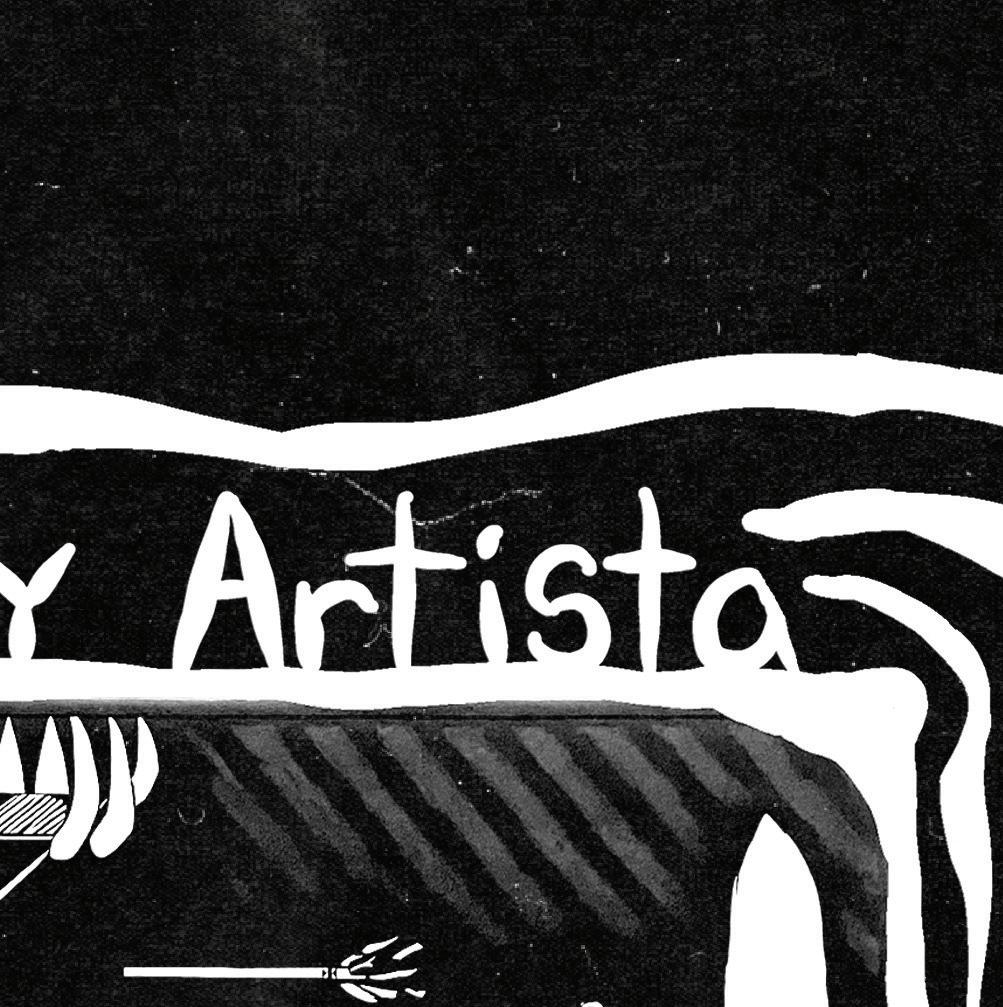



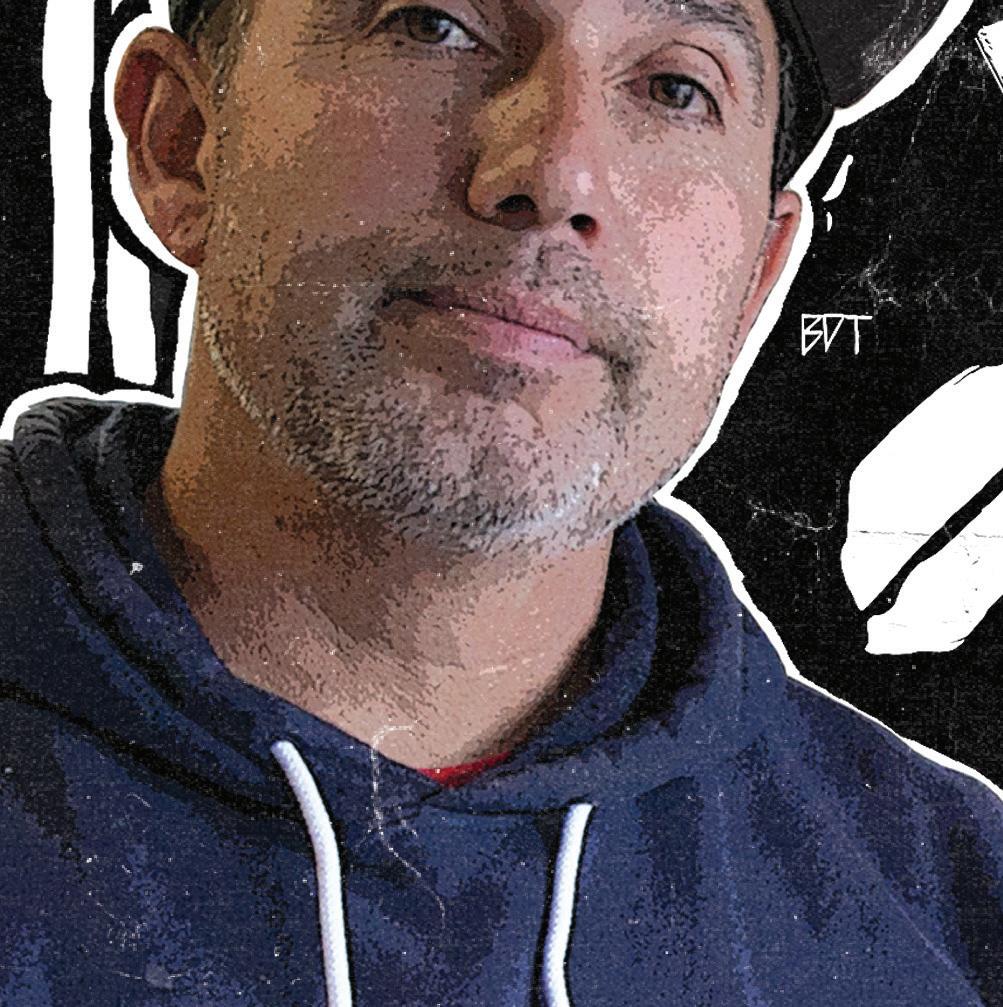
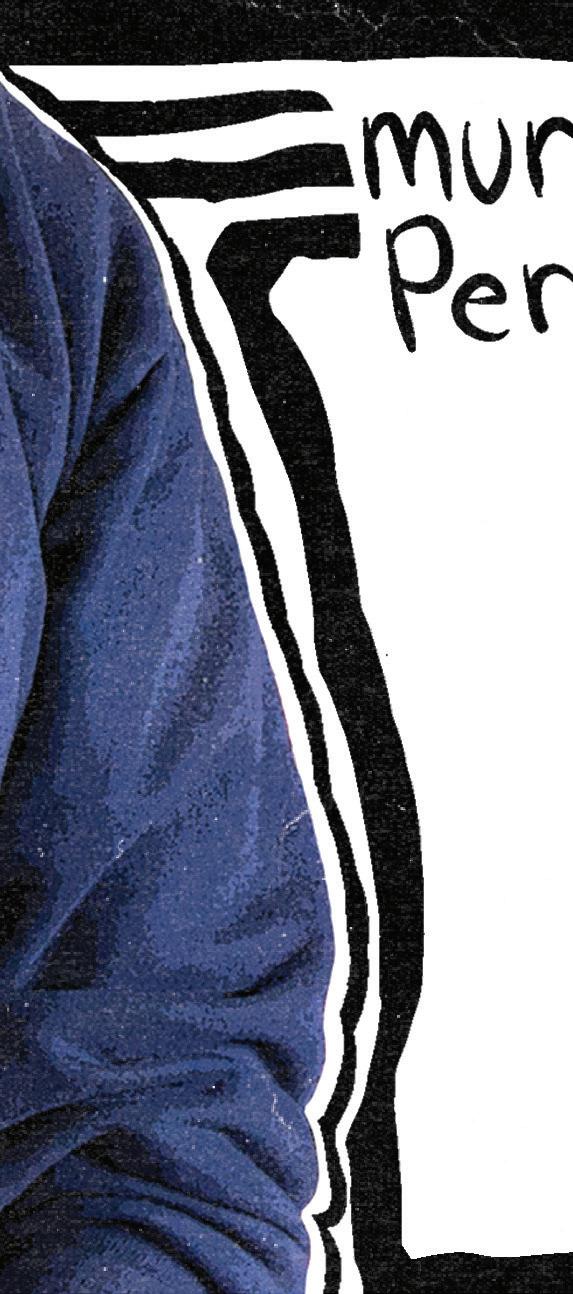







Arma encontrada en Fuente Nueva |p. 3 Estudiante de CPH agredido fuera de ATL |p. 4 Humboldt proyecto surfer en México|p. 17 Gun found at Fuente Nueva school |p. 3 CPH student assaulted outside ATL |p. 4 Profile: CPH student president|p. 8 Cal Poly Humboldt’s Student-Run Bilingual Newspaper FREE | GRATIS diciembre 2022 Vol. 19 Edición 4
El Leñador is an English and Spanish newspaper produced by Cal Poly Humboldt students. Our staff cover and provide news to Latinx and other diverse communities on campus and in Humboldt County. We are committed to providing relevant news and expanding the representations and stories told about people of color and other marginalized groups. Our work helps create more social, political and cultural diversity in local media.
El Leñador es un periodico en español y inglés producido por estudiantes de Cal Poly Humboldt. Nuestro personal cubre y provee noticias a la comunidad Latinx y otras comunidades diversas en el campus y en el condado de Humboldt. Estamos comprometidos a brindar noticias actuales y ampliar la representación y las historias que son contados sobre la gente de color y otros grupos marginados. Nuestros esfuerzos ayudan a crear una diversa presencia social, politica y cultural en los medios locales.

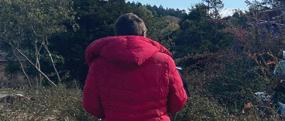
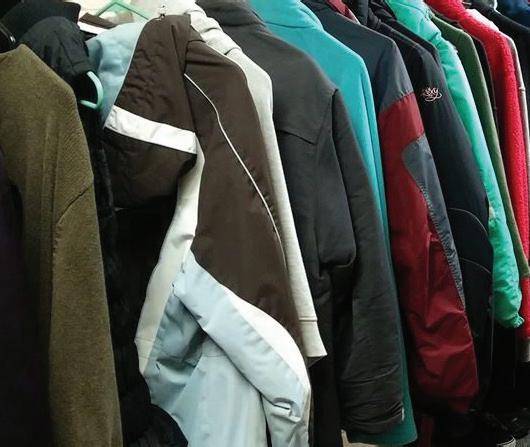
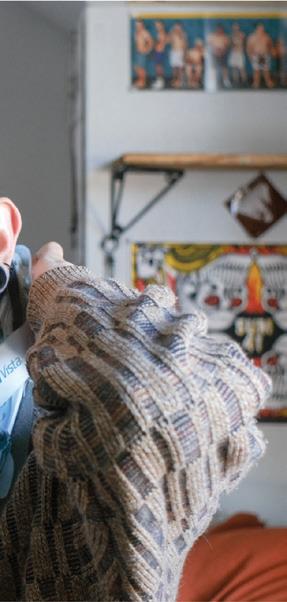
Editors in Chief
Ricardo Lara Nava

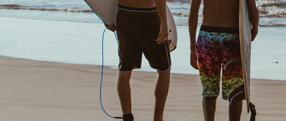
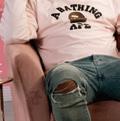
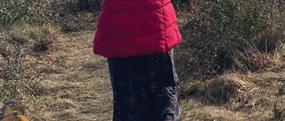
Managing Editor
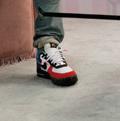





Frank Rocha



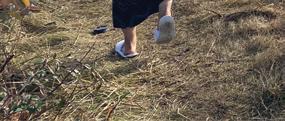
News Editor
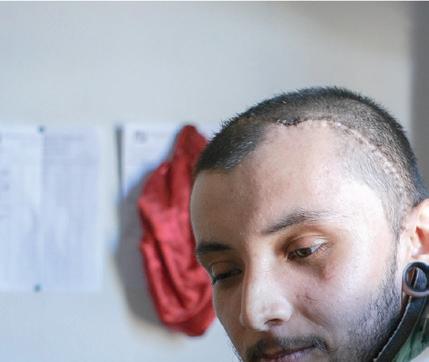
Angelina Ramírez Peirano
Life and Arts/Layout Editor
Karina Ramos Villalobos
Photo Editor






Abraham Navarro Copyeditor
Peyton Leone Spanish Editor
Desiree Osornio
Layout/Design





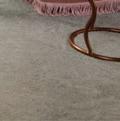





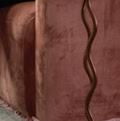
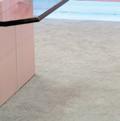

















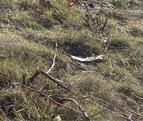
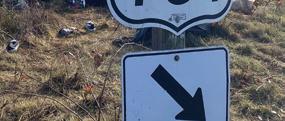
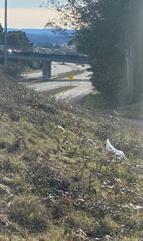


Evelyn Bañuelos, Elizabeth Lachman, Frank Rocha, Kianna Znika
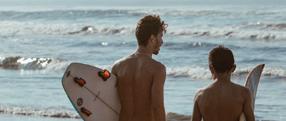
Writers/Contributors
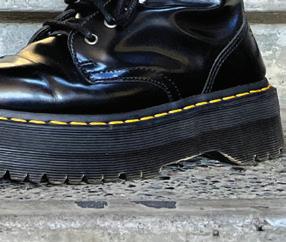
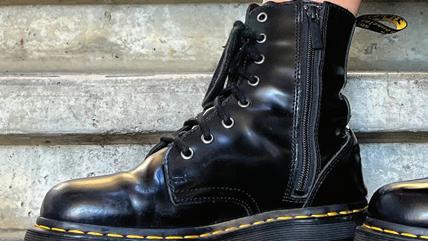


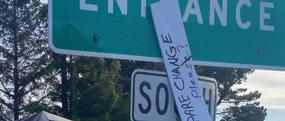
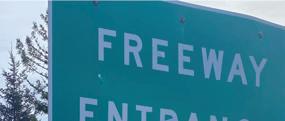
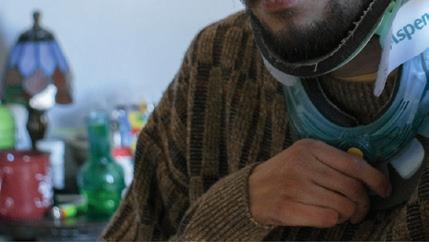
Evelyn Bañuelos, Chaela Gilman, Danielle Hendrickson, Raven Linton, Celeste Sadler, Guillermo Salazar Kianna Znika
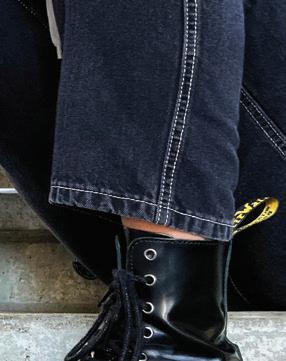
Translators

Alondra Cardona, Sandy Ceja, Jennifer Diaz Axomulco, Esmeralda Macias, Jennifer Reyes
To advertise with us, email ellenador. ads@gmail.com
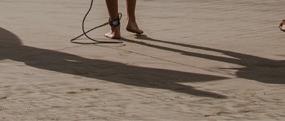
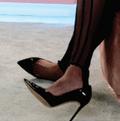

El Leñador staff can be reached at el-lenador@humboldt.edu.

2 | El Leñador |diciembre 2022| ellenadornews.com
M ISSION S TATEMENT
Public Relations Manager
Faculty Advisor
Front Cover/Primera Página: Cover graphic by Peyton Leone Photo by Abraham Navarro Ilustración de la portada por Peyton Leone Foto por Abraham Navarro Opinion Life & Arts News 03 Fuente Nueva: Gun found on campus 04 CPH student assaulted outside ATL 05 J4J: Coat drive 06 Houseless people during the rainy season 07 La Cocina Nuestra 08 Feature Story: Gio AS President 10 What to do over winter break 11 Dr. Martens trend 12 Soy Artista: Alme Allen 16 Surfer People Project 19 Series review: 'Ziwe' 20 Healing together through community 21 Letter from the Editors 04 05 06 @ellenadornews @ellenadornews @ellenadornews Follow us on Social Media Español 03 Fuente Nueva: Arma encontrada en el campus 04 Estudiante de CPH agredido cerca de ATL 05 J4J: Impulsión de la capa 09 Reportaje: Gio AS Presidente 13 Soy Artista: Muralista Alme Allen 17 Proyecto Surfer en Mexico 20 Sanar juntos a través de la comunidad 11 19 16
Steffi Puerto
Andrea Juarez
Student finds gun in Fuente Nueva garden
by Ricardo Lara Nava
On Nov. 8, a student at Fuente Nueva Charter School found a small pistol while clearing an overgrown area near the garden beds. Parents were notified earlier in the day by Beth Wylie, Charter director.



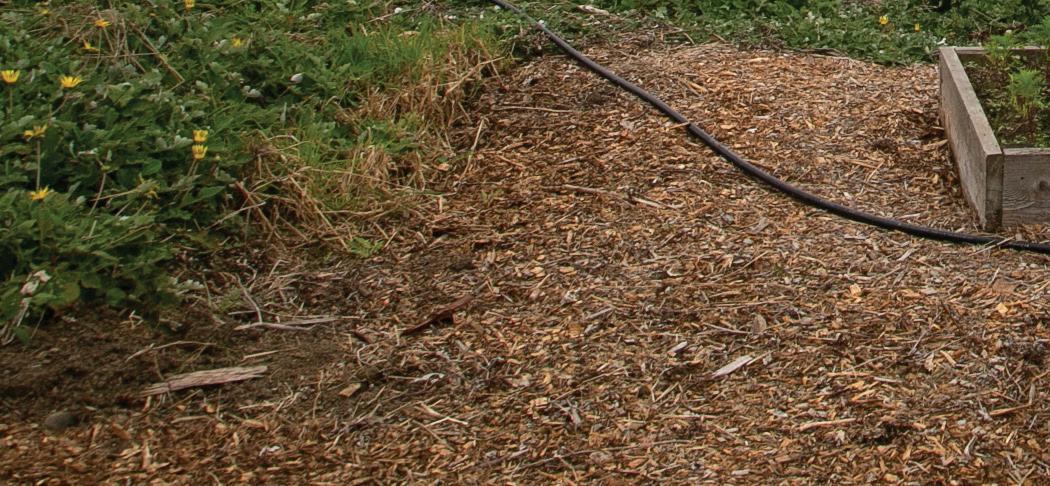

Arcata Police Department reports that the gun was unloaded, unregistered and with no witnesses on who placed the weapon there. No further investigation will be done given the pistol was made in the 70’s before serial numbers were required to be on firearms.
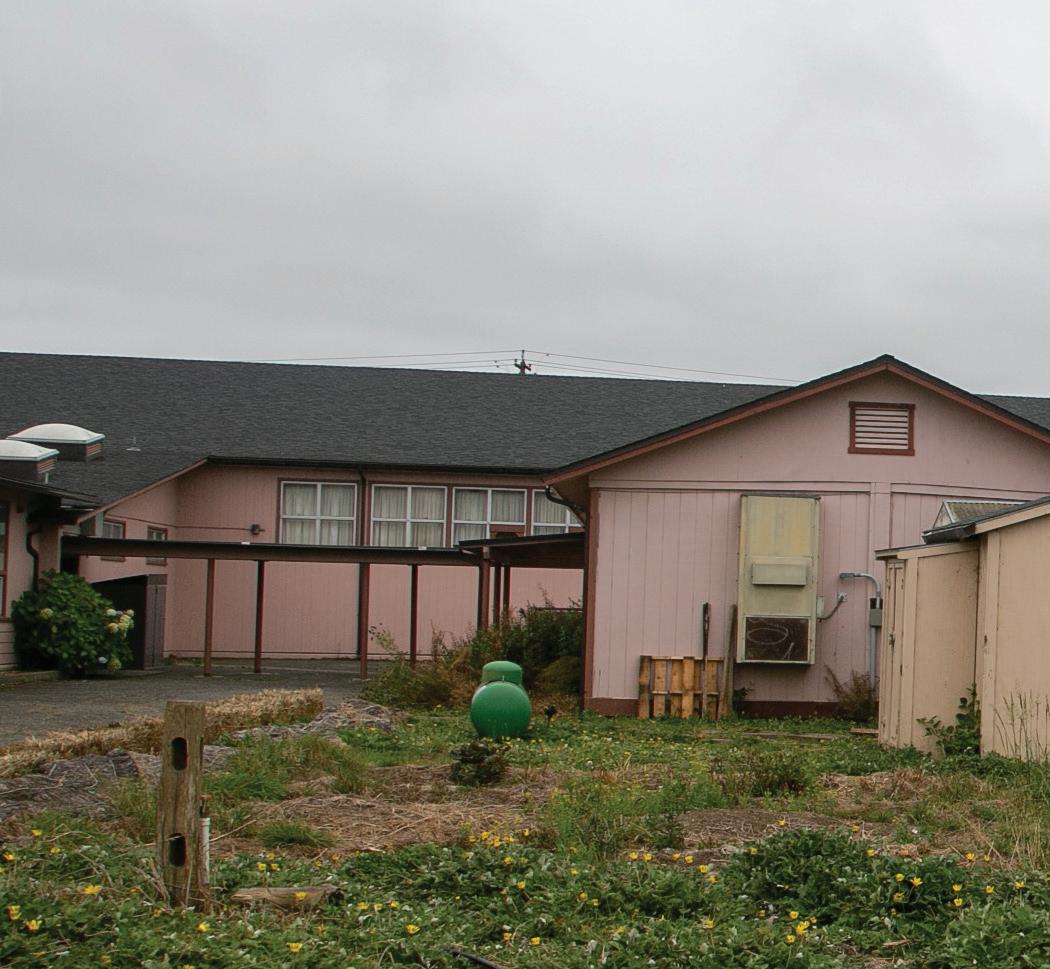
“We continue to work on safety improvements such as fencing, security cameras, additional notification systems [walkie-talkies / speakers

in all areas] and door barricades for lockdowns,” said Wylie in an email sent to parents. “It is anticipated that fencing and cameras will be installed soon, we have bids and are waiting for final approval. The campus is toured on a daily basis for safety hazards.”
On November 9, Fuente Nueva staff and interns held a healing space to discuss the weapon found on campus and how they feel.
“While the events are deeply concerning, the fact that the students did the right thing and notified an adult is very comforting,” Wylie said. “Together we can do our best to provide a safe learning environment for our students.”
Pistola encontrada en el jardín de Fuente Nueva
por Ricardo Lara Nava traducido por Desiree Osornio
El 8 de noviembre, un estudiante de la escuela concertada Fuente Nueva encontró una pistola pequeña mientras limpiaba una zona con muchas hierbas cerca de los cultivos del jardín. Beth Wylie, directora de la escuela chárter, notificó a los padres ese mismo día.

El Departamento de Policía de Arcata informa que la pistola estaba descargada, sin registro y sin testigos sobre quién colocó el arma allí. No se va a realizar ninguna otra investigación, dado que la pistola se fabricó en los años 70, antes de que se requiriera que los números de serie estuvieran en las armas de fuego.
"Seguimos trabajando en las medidas de seguridad, como el vallado, las cámaras de seguridad, los sistemas de notificación adicionales [walkie-talkies / bocinas en todas las áreas] y las barricadas en las puertas
para los bloqueos," dijo Wylie en un correo electrónico enviado a los padres. "Se prevé que el vallado y las cámaras se instalen pronto, tenemos propuestas y estamos esperando la aprobación final. El campus se recorre diariamente en busca de riesgos de seguridad."

El 9 de noviembre, el personal y los internos de Fuente Nueva ofrecieron un espacio de sanación para hablar del arma encontrada en el campus y de cómo se sienten.
"Aunque los eventos son profundamente preocupantes, el hecho de que los estudiantes hicieran lo correcto y notificarán a un adulto es muy reconfortante," dijo Wylie. "Juntos podemos hacer todo lo posible para ofrecer un ambiente de aprendizaje seguro a nuestros alumnos."
News Noticias ellenadornews.com | diciembre 2022 | El Leñador| 3
Fuente Nueva garden where the gun was found by student on Nov. 8. | Photo by Ricardo Lara Nava
It is anticipated that fencing and cameras will be installed soon, ”
Beth Wylie, Charter director
“
Jardín de Fuente Nueva donde el arma fue encontrada por un estudiante el 8 de noviembre. | Foto por Ricardo Lara Nava
APD seeks witnesses for brutal assault on CPH student
by Ricardo Lara Nava
Arcata Police Department has identified five suspects related to a Oct. 22 brutal assault of a Cal Poly Humboldt student, according to Chief of Police Brian Ahearn in an email on Dec. 6. APD is currently seeking witnesses. Cal Poly Humboldt student Caden Cuevas and friend Nathan Cruz were assaulted on the corner of 10th and G street across from US Bank.
Earlier, Cuevas encountered his assailants at the Arcata Theater Lounge where he asked them to refrain from saying the n-word. After the group began to call him the n-word and other names, he decided to walk away and carry on with his night. Hours later his attackers confronted Cuevas and Cruz, which led to the assault.
“Five people beat up a small, skinny, clearly disabled person over telling them to not say the n-word. That’s scary,” Cuevas said in an interview on Nov. 19.
Cuevas suffered a subdural hematoma, a broken left orbital socket and a fractured neck. He underwent a six hour emergency surgery to drain 95% of the blood in his skull to release the pressure, and was in a medically induced coma for a day and a half. When police spoke to Cuevas, they informed him that the initial scene was flagged as a murder due to Cuevas lying unconscious in a pool of blood.

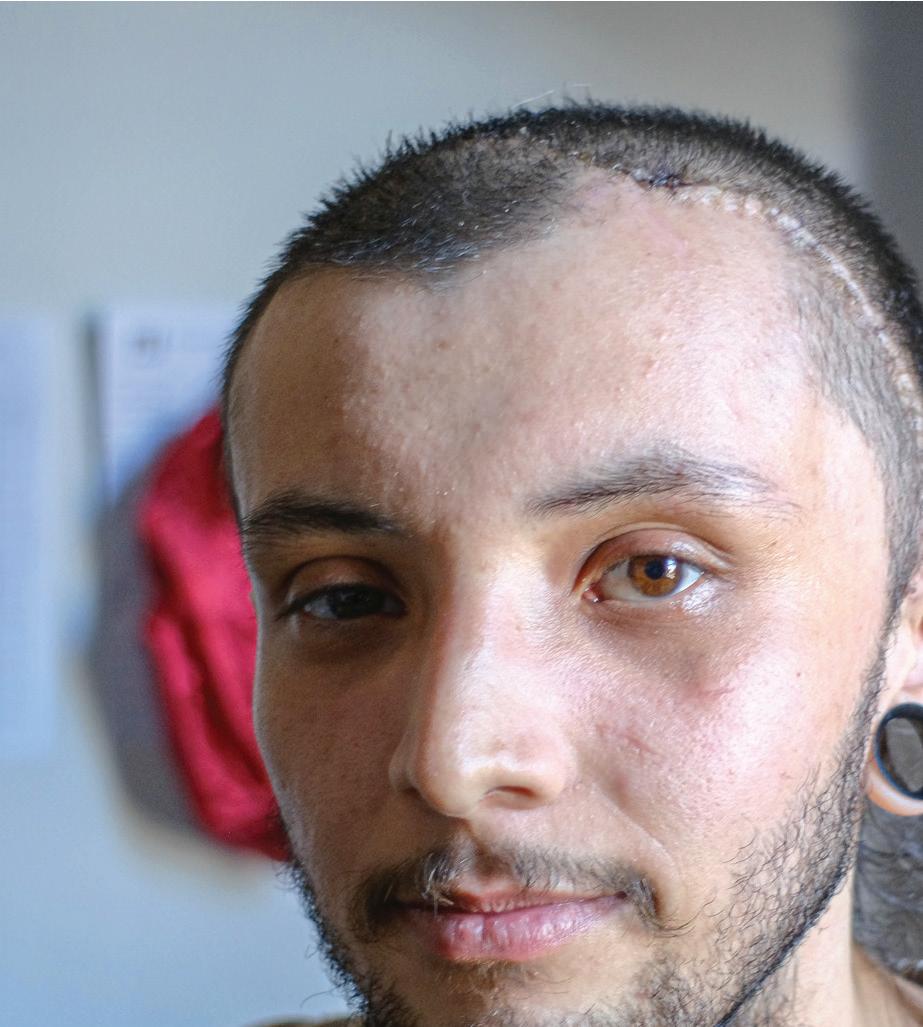
APD is asking for witnesses to come forward. Cuevas and Cruz described the assailants as being people of color. Cruz said that during and after the assault, people were standing around watching and not doing anything except for two individuals who tried to get the assaulters off of them.
“I told one of them to go get my friend who works at the ATL and come over where we were but nobody did. So I called 9-1-1,” Cruz said.
A week after Cuevas was released from the hospital, he notified his professors and advisors about what had happened.
“They all sent in the CARES act, Dean of Students, Title IX, administrators. Everybody,” Cuevas said. “UPD got in contact with APD and they told me what they know.”
Cuevas said that nobody from campus or the community knew that this had happened to him, and was surprised that nothing was sent out from the university
APD busca testigos por brutal agresión a estudiante de CPH
por Ricardo Lara Nava traducido por Sandy Ceja
El Departamento de Policía de Arcata ha identificado cinco sospechosos relacionados con un brutal asalto el 22 de octubre a un estudiante de Cal Poly Humboldt, según el Jefe de Policía Brian Ahearn en un correo electrónico el 6 de diciembre.
El APD está buscando testigos. Caden Cuevas, estudiante de Cal Poly Humboldt, y su amigo Nathan Cruz, fueron agredidos en la esquina de la calle 10th y G, frente a US Bank.
durante y después del asalto, la gente estaba parada observando y sin hacer nada, excepto dos personas que intentaron quitarle de encima a los agresores.
“Le dije a uno de ellos que fuera a buscar a mi amigo que trabaja en ATL y que viniera a donde estábamos, pero nadie lo hizo. Así que llamé al 9-1-1,” dijo Cruz.
Una semana después de que Cuevas fue dado de alta del hospital, notificó a sus profesores y consejeros sobre lo sucedido.
“Todos enviaron el acto CARES, Decano de Estudiantes, Título IX, administradores. Todos,” dijo Cuevas. “El UPD se puso en contacto con el APD y me dijeron lo que saben. Dijeron que uno de los agresores era un estudiante de Cal Poly Humboldt en la primavera [2022], no mucho sobre los otros cuatro.”
Caden Cuevas almost a month since the assault on Nov. 19.
| Caden Cuevas casi un mes después del asalto del 19 de noviembre. | Photo by Ricardo Lara Nava
or the ATL about the incident. “Nobody knew how bad it was,” he said. “I almost died.”
Due to the emergency surgery, Cuevas has to take seizure medication regularly to alleviate his head pain. He is currently trying to get caught up on assignments by doing two of them a day. Cuevas said he is not afraid of leaving his home but he is afraid of going to campus because of the chance that he might run into the assailants.
El Leñador reached out the CPH News and Information for a comment or statement to the assault. Grant Scott-Goforth, public information officer, said by email on Dec. 5, “UPD has confirmed that this is an Arcata Police Department investigation, details about it will have to come from that office.The university can’t share information about active Title IX investigations.”
If you were a witness to what occurred in the early morning of Oct. 22 contact the Arcata Police Department at (707) 822-2428.
Más temprano, Cuevas se encontró con sus agresores en el Arcata Theatre Lounge (ATL), donde les pidió que no estuvieran diciendo una palabra derogatoria hacia gente Negra.
Después de que el grupo comenzó a llamarlo esa palabra derogatoria y otros nombres, decidió alejarse y continuar con su noche. Horas después, sus atacantes se enfrentaron a Cuevas y Cruz, que resultó en un asalto brutal.
“Cinco personas golpearon a una persona flaca y pequeña que era claramente discapacitado por decirles que no dijeran una palabra derogatoria. Eso da miedo,” dijo Cuevas en una entrevista el 19 de noviembre.
Cuevas sufrió un hematoma subdural, una cavidad orbitaria izquierda rota y una fractura de cuello. Se sometió a una cirugía de emergencia de seis horas para drenar el 95% de la sangre en el cráneo y liberar la presión, y estuvo en coma médicamente inducido durante un día y medio. Cuando la policía habló con Cuevas, le informaron que la escena inicial fue marcado como un asesinato debido a que Cuevas estaba acostado inconsciente en un charco de sangre.

El Departamento de Policía de Arcata está pidiendo que se presenten testigos. Cuevas y Cruz describió a los agresores como gente de color. Cruz menciona que
Cuevas dijo que nadie del campus o de la comunidad sabía que esto le había sucedido y se sorprendió de que la Universidad o la ATL no enviaran nada sobre el incidente. “Nadie sabía lo malo que era,” dijo. "Casi me morí."
Debido a la cirugía de emergencia, Cuevas tiene que tomar medicamentos anticonvulsivos con regularidad para aliviar el dolor de cabeza. Está intentando ponerse al día con las tareas haciendo dos al día. Cuevas dijo que no tiene miedo de salir de su casa, pero tiene miedo de ir al campus por la posibilidad de encontrarse con los agresores.
El Leñador se puso en contacto con las Noticias e Información de la CPH para un comentario o declaración sobre el asalto. Grant Scott-Goforth, oficial de información pública, dijo por correo electrónico el 5 de diciembre, “El Departamento de Policía Universitario ha confirmado que se trata de una investigación del Departamento de Policía de Arcata, los detalles sobre ella tendrán que provenir de esa oficina. La universidad no puede compartir información sobre investigaciones activas del Título IX.”
Si fue testigo de lo ocurrido la madrugada del 22 de octubre, comuníquese con el Departamento de Policía de Arcata al (707) 822-2428.
News Noticias 4 |El Leñador | diciembre 2022| ellenadornews.com
Josiah Lawson winter coat drive on Dec. 10
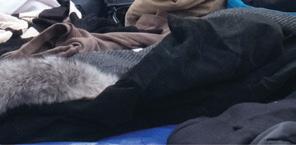



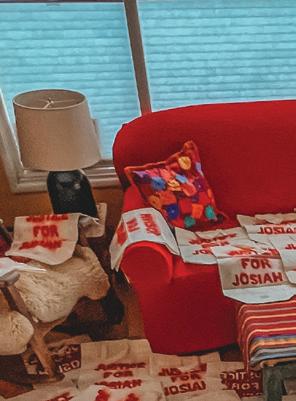 by Peyton Leone
by Peyton Leone
A coat drive will be held in honor of David Josiah Lawson on Dec. 10th from 3 - 5 p.m. in the Arcata Plaza. The drive is taking place for the fifth year in a row and seeks to help those that are in need of supplies to make it through Humboldt's harsh winter months.
The drive is accepting donations of new coats and coats that are in good clean condition, sleeping bags, blankets, towels and washcloths. They are also looking for toiletries like toothpaste, soap and feminine hygiene products. As well as, food that does not require cooking, refrigeration or a can opener will also be accepted and distributed at the Justice for Josiah Coat Drive.





Donations can be delivered to Students for Violence Prevention on Cal Poly Humboldt campus, contact romi@humboldt. edu to arrange on campus donations or to Arcata City Hall, 736 F St. Arcata.

Charmaine Lawson started the drive in 2017 after coming to Humboldt and passing out fliers with information about her sons murder. An unhoused man recognized him on the flier and told her that her son had given a slice of pizza to the man.
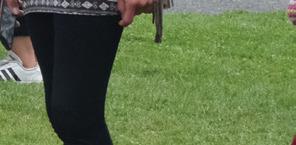
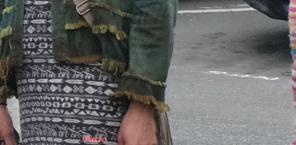
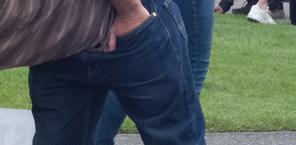
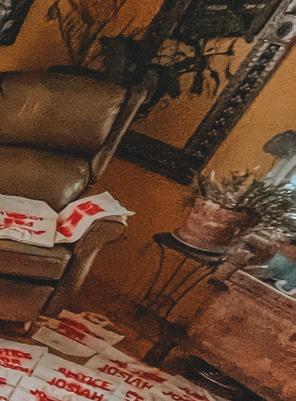
"He showed love and empathy and I felt like that was a beautiful story," Lawson said. She wants the coat drive to benefit the unhoused and students who may need the support during this time of the year.

"They need it all the time but the holiday season is where it gets really difficult for a lot of people," Lawson said. "I don't have my son to spend the holiday with, so in memory of him I just want to help as much as I can."
Lawson is also looking for help packing and handing out bags on the day of the event. Volunteers can message Charmaine Lawson through the Justice for Josiah facebook or email romi@humboldt.edu to volunteer.
Romi Hitchcock-Tinseth, a lecturer at Cal Poly Humboldt department of communication, became involved with the Justice for Josiah movement after attending vigils and reaching out to Charmaine.
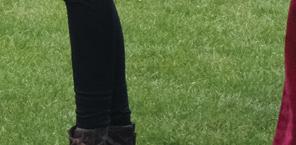
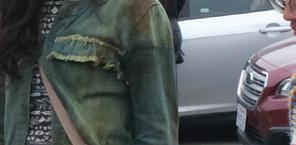



"Just image how you would feel if your child/loved one was murdered and their killer walked the streets of our community, free," Hitchcock-Tinseth said. "No parent would give up that fight and no community should either."


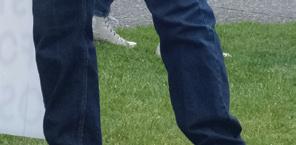

Recogida de abrigos por Josiah Lawson el 10 de Diciembre

El 10 de Diciembre se realizará una colecta de abrigos en honor a David Josiah Lawson de 3 a 5 p.m. en la Plaza de Arcata. La colecta se lleva a cabo por quinto año consecutivo y busca ayudar a aquellos que necesitan artículos para pasar los meses duros del invierno en Humboldt.

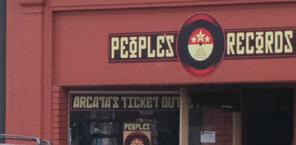
La campaña acepta donaciones de abrigos nuevos y abrigos que estén en buen estado de limpieza, sacos de dormir, cobijas, toallas y paños. También buscan artículos de baño como pasta de dientes, jabón y productos de higiene femenina. También se aceptarán alimentos que no requieran ser cocinados, refrigerados o con abridor de latas y se distribuirán en la colecta de abrigos de Justice for Josiah.
Las donaciones pueden entregarse a Students for Violence Prevention en el campus de Cal Poly Humboldt, contacte a romi@humboldt.edu para organizar las donaciones en el campus o en el Arcata City Hall, 736 F St. Arcata.
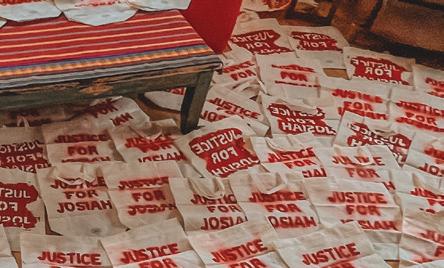
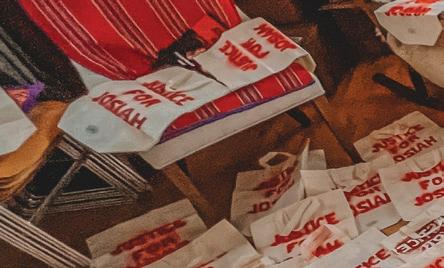
Charmaine Lawson inició la campaña en 2017 despues de llegar a Humboldt y repartir volantes con información sobre el asesinato de su hijo. Un hombre sin hogar lo reconoció en el volante y le dijo que su hijo le había dado un pedazo de pizza.

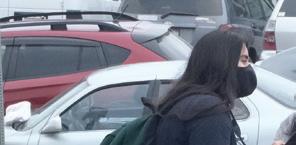

"Mostró amor y empatía y sentí que era una historia hermosa," dijo Lawson. Ella quiere que la colecta de abrigos beneficie a los que no tienen vivienda y a los estudiantes que pueden necesitar el apoyo durante esta época del año.
"Lo necesitan todo el tiempo, pero en la temporada de vacaciones es donde se vuelve realmente difícil para mucha gente," dijo Lawson. "No tengo a mi hijo para pasar las fiestas, así que en memoria de él sólo quiero ayudar todo lo que pueda."

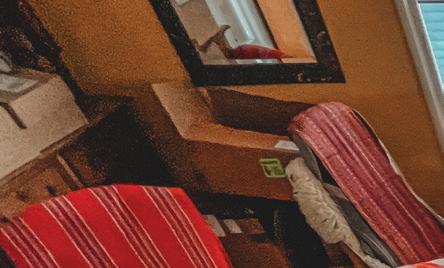
Lawson también busca ayuda para empaquetar y repartir las bolsas el día del evento. Los voluntarios pueden enviar un mensaje a Charmaine Lawson a través del facebook de Justice for Josiah o enviar un correo electrónico a romi@humboldt.edu para ser voluntarios.




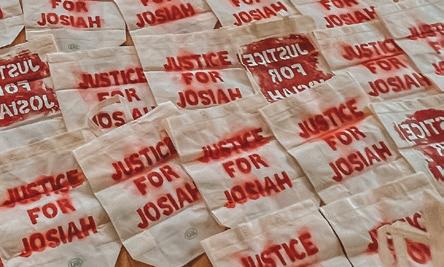
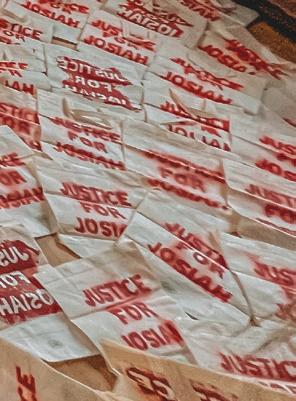
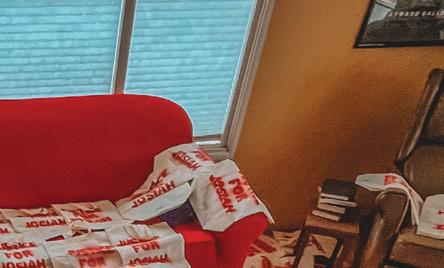
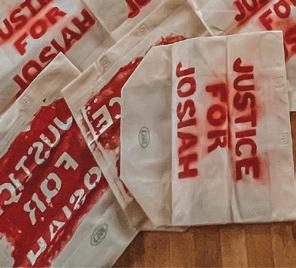
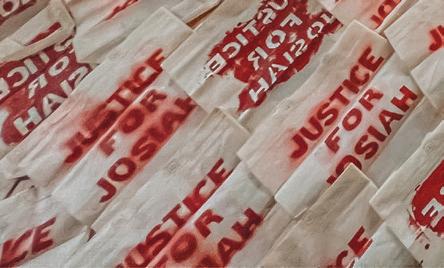
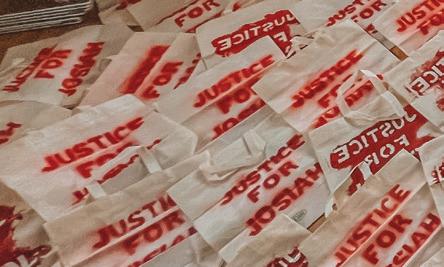

Romi Hitchcock-Tinseth, profesora del departamento de comunicación de Cal Poly Humboldt, se involucró en el movimiento Justicia para Josiah tras asistir a las vigilias y ponerse en contacto con Charmaine.
"Imagínense cómo se sentirían si su hijo/amado fuera asesinado y su asesino caminará por las calles de nuestra comunidad, libre," dijo Hitchcock-Tinseth. "Ningún padre abandonaría esa lucha y ninguna comunidad debería hacerlo tampoco."
News Noticias ellenadornews.com | diciembre 2022 | El Leñador| 5
por Peyton Leone traducido por Alondra Cardona
Bags stenciled with "Justice for Josiah" in preparation for the Josiah Lawson coat drive. | Bolsas estampadas con "Justicia para Josías" en preparación para la colecta de abrigos de Josiah Lawson. | Photo courtesy of J4J team
Coat drive at the J4J run on April 17 2021. | Recorrido por el abrigo en la carrera J4J el 17 de abril de 2021. | Photo by Ricardo Lara Nava
Houseless in the Arcata cold
by Kianna Znika
As temperatures in Humboldt county drop, the houseless people of Arcata are faced with the additional challenge of staying warm and dry. Only one block away from Cal Poly Humboldt, on a grass field by the freeway entrance, is a particular community where the people share resources and each other’s company during the harsh winter season.

There, you can find Jennifer “Skittles” Mathey, who has lived in the streets of Arcata for 20 years.
“We’re a family,” Skittles said with a bright smile. “When we move, we move together. We share everything.”
Originally from Wisconsin, Skittles has learned how to best manage in the Arcata cold and help the community of people around her. To protect against the harsh, cold winds, they use large umbrellas, trees and tarps to build a warm and secure shelter. The additional resources Skittles finds most useful during the cold is cardboard, newspaper and, surprisingly, ice.
“Cardboard and newspaper helps,” Skittles said, as she pointed to a platform made up of the stacked materials. Mathey explained that the stacked cardboard and newspaper bed keeps her and her friends very warm, so much so that she sweats some nights even in the 40-degree weather.
Within these covered forts, they sleep with other people and lots of blankets. In this situation, Skittles expressed that it gets hard to breathe. Having ice in the shelter helps cool and freshen the air. Once it has melted, it serves a double purpose as drinking water. They mostly get ice from the iced beverage known as Frazil that can be acquired at the local gas station.
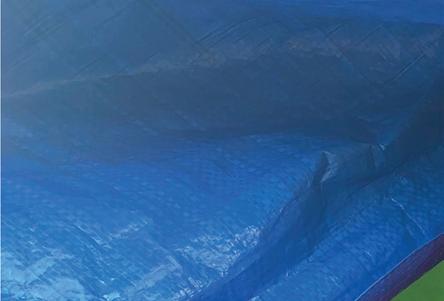
Despite these methods, she shared that there are still many challenges that her and

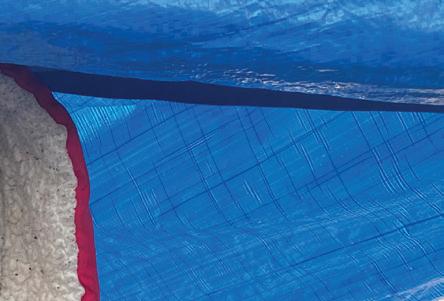
her community face in the winter season. She explained that the harsh winds cause their skin to become very dry and irritated. When asked what would best help with this, she replied, “lots of Vaseline.” Anything other than Vaseline, especially scented products, often further irritates their skin, she stated. Other resources they find most helpful are zip-up hoodies and loose socks.
“Pullovers are suffocating,” Skittles said, explaining that it’s much easier to bundle up in a zip-up hoodie like a sleeping bag. They’d like more comfortable clothing rather than something that is very tight on their body.
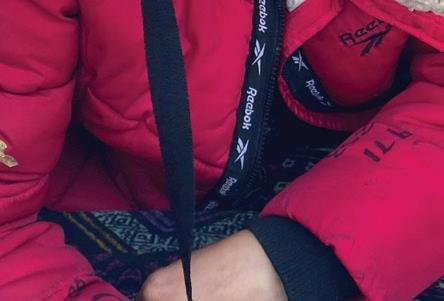
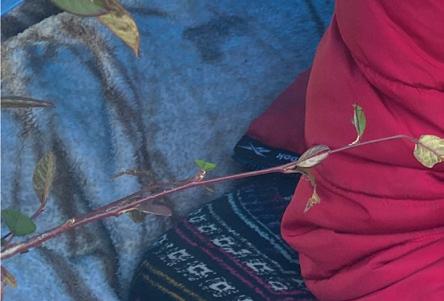
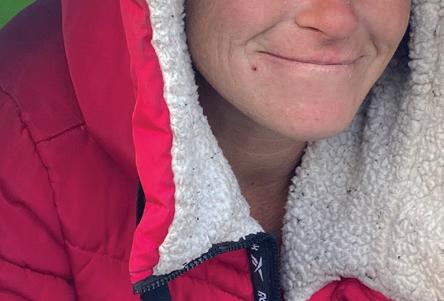
When asked what they would most love to receive as a donation, they said portable radios would mean the most to her and her community.
“We love radios,” she said. “We love music. There’s a song in my heart and they usually play it on the radio.”
Skittles explained that other benefits of having a radio include listening to weather reports and knowing what time of day it is. They would have a more difficult time finding this information otherwise.
Skittles is very grateful for Cal Poly Humboldt, explaining that it’s mostly these students who tend to check up on her on a consistent basis.
“A lot of my regulars are college kids,” she said. “Some of them are even teachers.”
This community of houseless people are constantly building up their shelters of warmth on their field by the freeway, utilizing every resource they get with gratitude.


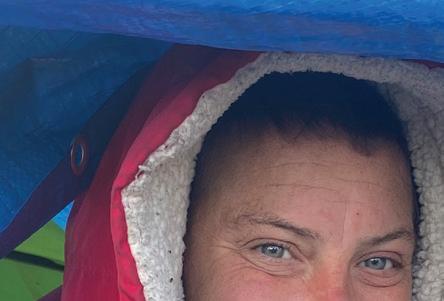
Skittles is very confident in their handling of the cold weather, and looks forward to celebrating her birthday on Dec. 23 with her friends in the community around her.

6 |El Leñador | diciembre 2022| ellenadornews.com Noticias
Jennifer "Skittles" Mathey has lived in the streets of Arcata for 20 years. | Photo by Kianna Znika
La Cocina Nuestra: A new CPH course for Spring 2022


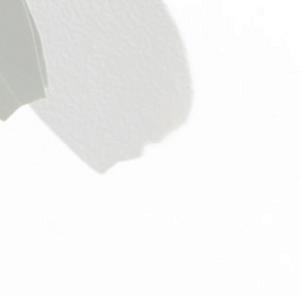

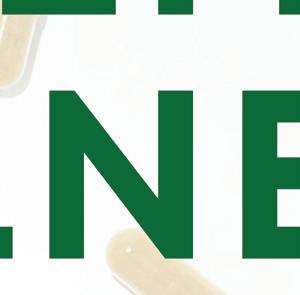
 by Celeste Sadler
by Celeste Sadler
For students interested in food, history and Indigenous culture, the Spanish department is introducing a new class in the Spring 2023 semester at Cal Poly Humboldt, La cocina nuestra (SPAN 480).






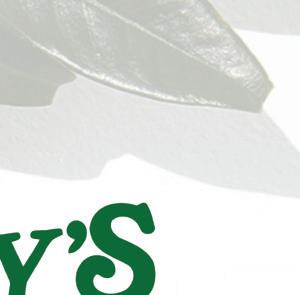
As described on the course poster, students who take SPAN 480 will learn about the sustainable methods and ethnocultural techniques that the Indigenous peoples of the Americas used for thousands of years to fish, hunt, forage, grow and prepare food in order to nourish, celebrate and heal.


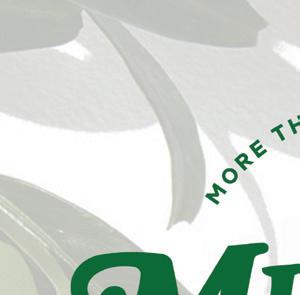
“Food brings us all together– and so, I think that that focusing on food as an important part of culture is very worthwhile and we have someone who is a foodie, he loves food and he's into cooking and exploring recipes and things like that,” said Matthew Dean, the programs leader for the Department of World Languages and Cultures (WLC).
The course is three units, has no prerequisites and is being taught in English by Russel Carlos Gaskell, a faculty member of the WLC Spanish program. However, he is going to bring in community speakers who have first hand knowledge about certain aspects of the course.
The class will be on Thursdays from 5:30 p.m. to 8:20 p.m. in the Behavior and Social Sciences building room 166 for the first five to six weeks of the class. The following 10 weeks will be at the D Street Neighborhood Center on 1301 D St, Arcata, CA 95521. The maximum number of students allowed to take this course is 25 people.



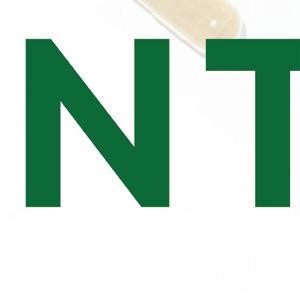
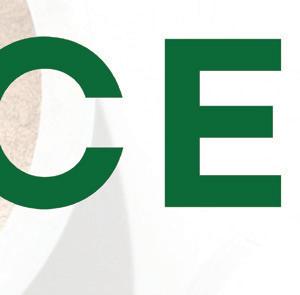



The concept of the course is to bring students back to the pre-Columbian Americas from the Aleutian Islands in Alaska to Patagonia in South America. Students are going to learn about the techniques used to gather and hunt for foods as well as the ingredients and cooking methods used by the Indigenous peoples. Students will use that information combined with their intuition to try and recreate dishes that people may have been eating back then.
The first five to six weeks of the class will be theoretical learning, reading the required texts and listening to community speakers. The next five weeks will be hands-on cooking experience to try
to recreate the dishes using one’s own intuition and experience with cooking. The last five weeks the students will teach the class their own home recipes from their ethnic background.
“Which will make it a unique course in that it'll be different every time we run it or offer it because the students will be different, so there’ll be different perspectives that are coming in constant-
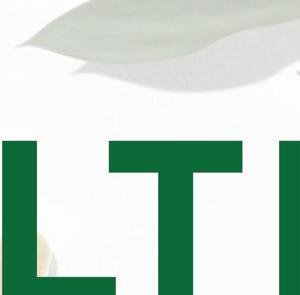
ly to the course,” Gaskall said. “And we’re gonna learn a lot anyway from each other just throughout the course. This is the first time that we’re doing it so we’ll see where it leads us.”
One of the hopeful outputs of the course will be a recipe book. This recipe book will include a glossary of all of the terms and food items that were introduced during this course. The


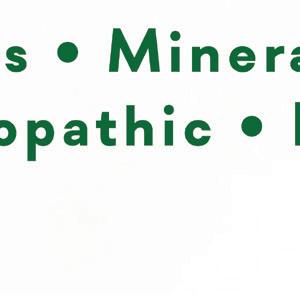



recipe portion of the book will include the pre-columbian recipes they tried to recreate and the recipes of the students that participated.
It will include pictures, lists of ingredients and familial anecdotes associated with the dish such as when they eat it, who they eat it with, how long the family has been using this recipe, where they learned the recipe and such.
News Noticias ellenadornews.com | diciembre 2022 | El Leñador| 7
Nana Xochi Quetzali holds a basket of corn from her altar in her house on Oct. 28. | Photo by Abraham Navarro.
Student builds community through leadership
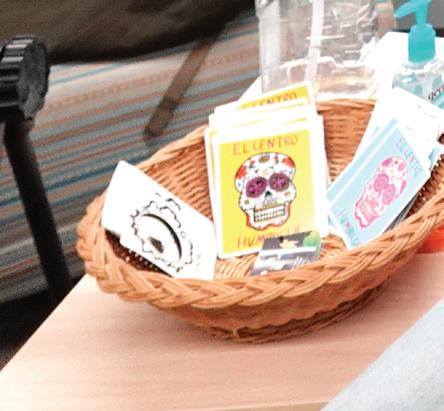
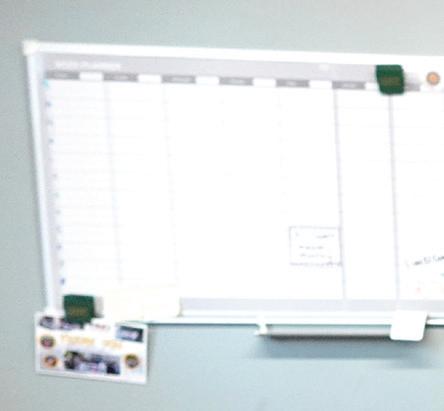 by Peyton Leon
by Peyton Leon
Juan Giovvani Guerrero is the Associated Student (AS) president at Cal Poly Humboldt (CPH). He is a senior in environmental science management and plans to graduate in the spring 2023 semester. During his college journey, Guerrero has been a leader in many areas on campus.
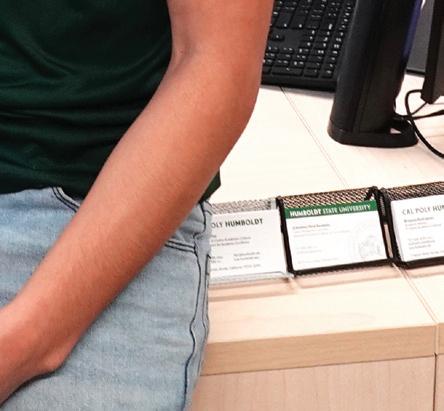
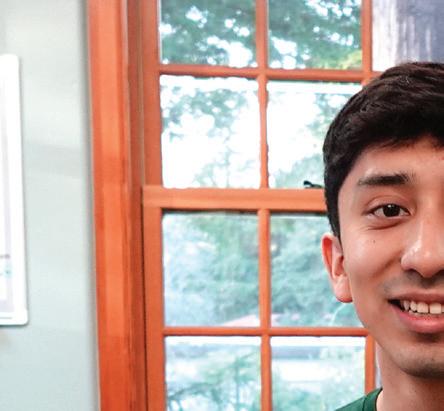
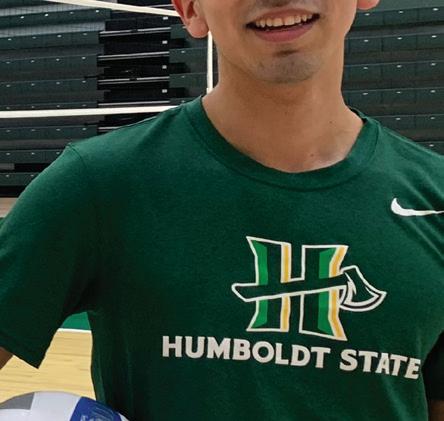
He joined AS in 2019 due to his interest in public service and leadership. He came second in a race of three candidates that year, but rather than be discouraged by this loss he took it as motivation to hold other responsibilities in AS. Before becoming AS president, Guerrero was the External Affairs Representative.
Guerrero (23) originally from San Diego County, grew up being the second oldest out of six siblings. He says early experiences shaped him into the person he is today.
"My upbringing was ugly," Guerreo said. "I recall in middle school wearing really old clothes, really ripped, baggy clothes." He said that his family moved around often, severing friendships and connections with teachers with each move. He struggled with food insecurity saying that access to nutritious foods was a challenge. This led to him being bullied by peers.
Guerrero said this was a "very limited lifestyle, limited options in terms of what I could do."
He credits his teacher Dr. Janet Ilko Ed.D the at Cajon Valley Middle School as the "greatest mentor in [his] life", for helping him overcome certain obstacles.
Dr. Ilko was Guerrero’s 7 and 8 grade teacher in a class geared toward preparing students for college. Guerrero remembers her as being "like a second mother". She saw much potential in Guerrero and pushed him to take on roles of leadership.
"He was tremendously shy and I just watched him, in eighth grade, grow into this amazing kid who started to speak out for himself," Dr. Ilko said. "I'm extremely proud to be a tiny part of that but it’s the work that he did, it’s the things he over-
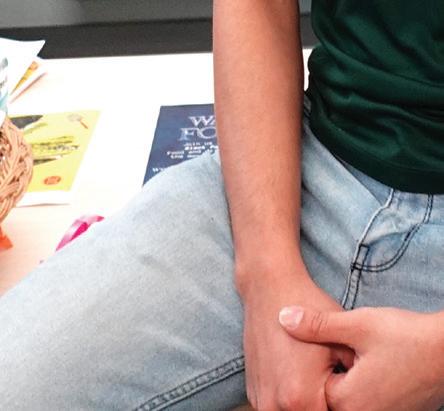
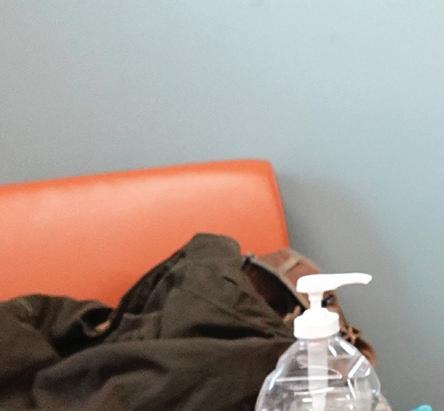
came in his life— it’s his determination that was always there."
Guerreros's determination keeps him pushing into new experiences. This year he joined the volleyball team as a way to "try something new and join something that I hadn't joined before," Guerrero said. He also see's volleyball "as an outlet, or a getaway for any new stress I have."
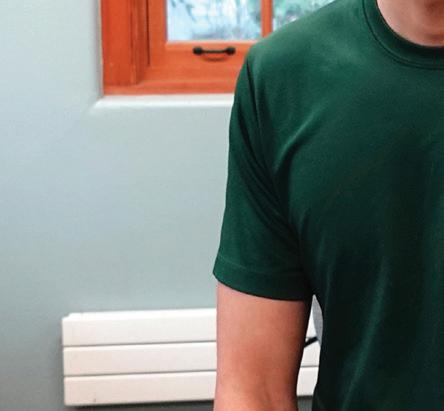

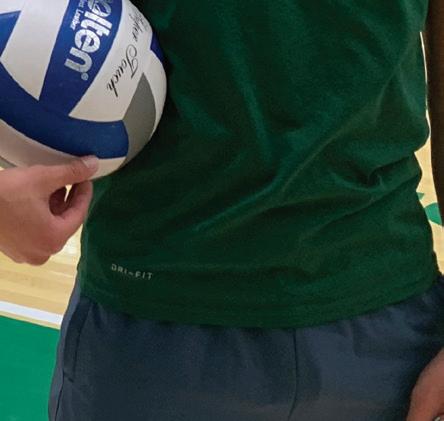
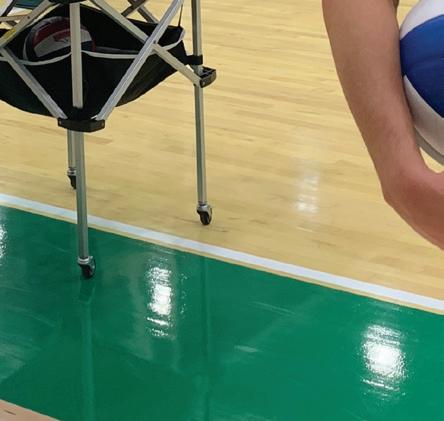



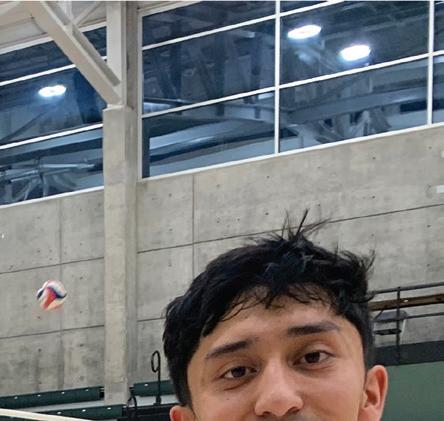
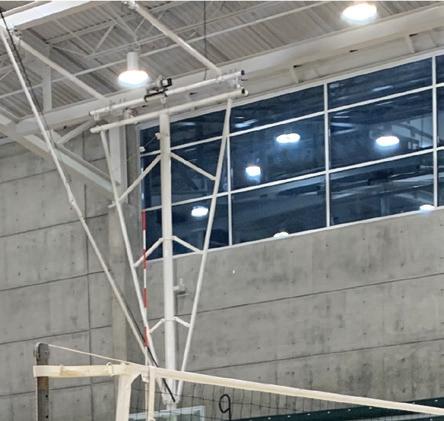

Guerrero plans to one day become the chief of staff in the public service sector, working with state or federal representatives to direct their teams. After graduation he plans to contact representatives to see about starting work in that field.
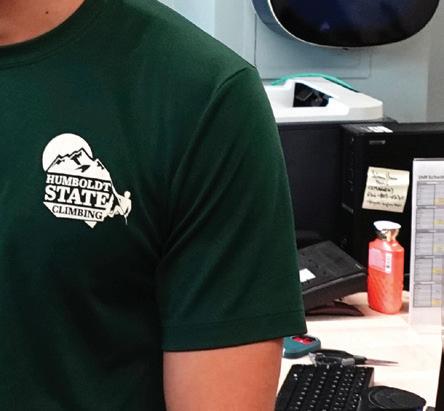
Guerrero's other leadership role on campus is at El Centro Academico Cultural (El Centro) as the Operations and Hospitality Specialist. In his role there he serves as a liaison between the student body and El Centro, ensuring that the center is meeting the needs of students.
"I came into that without a lot of knowledge in terms of what my role is here in this space and a disconnect between myself and my roots. It was really cool being in that space and sharing that common feeling with other people and learning together. Learning about our mission and learning what it means to be a leader on campus what it means to be a leader on an Hispanic Serving Institution campus," Guerrero said. "There is most definitely a lot of room for growth for our campus to own what that means and serving the Latinx community that does come here."
Aliah Bueno-Strong, the staff lead at El Centro, first met Gio during his 2019 run for AS president. He came into El Centro to ask for support in his campaign.
"He works very hard for both El Centro and as the student president,” Bueno-Strong said. “You can tell when he's tired but he just perseveres and goes forward and does the best that he can with the time that he has."
Life & Arts La Vida y Los Artes 8 |El Leñador | diciembre 2022| ellenadornews.com
Juan Giovanni Guerrero posing for a photo during his shift at El Centro on Dec 5. | Juan Giovvani Guerrero posando para una foto durante su turno en El Centro el 5 de diciembre. | Photo by/por Peyton Leone
Juan Giovvani Guerrero posing for a photo at volley ball practice on Nov. 30. | Juan Giovvani Guerrero posando para una foto en la práctica de voleibol el 30 de noviembre. | Photo by/por Peyton Leone
“ Learning about our mission and learning what it means to be a leader on campus what it means to be a leader on an Hispanic Serving Institution campus,"
— Juan Giovvani Guerrero
Estudiante construye comunidad con liderazgo
por Peyton Leon traducido por Alondra Cardona
Juan Giovvani Guerrero es el presidente de Associated Student (AS) en Cal Poly Humboldt (CPH). Está en el último año de la carrera de administración de ciencias ambientales y planea graduarse en el semestre de primavera de 2023. Durante su trayectoria universitaria, Guerrero ha sido un líder en muchas áreas del campus.

Se unió a AS en 2019 debido a su interés en el servicio público y el liderazgo. Ese año quedó en segundo lugar en una carrera de tres candidatos, pero en lugar de desanimarse por esta pérdida, lo tomó como motivación para ocupar otras responsabilidades en AS. Antes de ser presidente de AS, Guerrero era el representante de Asuntos Externos.



Guerrero (23), originario del condado de San Diego, creció siendo el segundo mayor de seis hermanos. Dice que sus primeras experiencias lo convirtieron en la persona que es hoy.

"Mi infancia fue fea," dijo Guerreo. "Recuerdo que en la escuela secundaria llevaba ropa muy vieja, muy rota y floja." Dijo que su familia se mudaba con frecuencia, cortando las amistades y las conexiones con los maestros con cada mudanza. Luchó contra la inseguridad alimentaria y dijo que el acceso a alimentos nutritivos era un reto. Esto le llevó a ser molestado por sus compañeros.
superó en su vida, es su determinación que siempre estuvo ahí."
La determinación de Guerreros le hace seguir empujando hacia nuevas experiencias. Este año se unió al equipo de voleibol como una forma de "probar algo nuevo y unirme a algo que no había hecho antes," dijo Guerrero. También considera el voleibol "como un desahogo, o una vía de escape para cualquier nuevo estrés que tenga."

Guerrero planea convertirse algún día en jefe de personal en el sector de los servicios públicos, trabajando con representantes estatales o federales para dirigir sus equipos. Después de graduarse, planea ponerse en contacto con representantes para ver la posibilidad de empezar a trabajar en ese campo.

“Fue realmente estupendo estar en ese espacio y compartir ese sentimiento común con otras personas y aprender juntos.
Aprender sobre nuestra misión y aprender lo que significa ser un líder en el campus,”

Guerrero dijo que era un "estilo de vida muy limitado, opciones limitadas en términos de lo que podía hacer."
Reconoce a su profesora, Dra. Janet Ilko Ed.D de la Cajon Valley Middle School, como la "mejor mentora de [su] vida", por haberle ayudado a superar ciertos obstáculos.
Dra. Ilko fue la profesora de Guerrero en los grados 7 y 8 en una clase orientada a preparar a los estudiantes para la universidad. Guerrero la recuerda como "una segunda madre". Ella vio mucho potencial en Guerrero y lo empujó a tomar roles de liderazgo.
"Era tremendamente tímido y simplemente lo vi, en octavo grado, convertirse en este chico increíble que comenzó a hablar por sí mismo," dijo la Dra. Ilko. "Estoy muy orgullosa de ser una pequeña parte de eso, pero es el trabajo que hizo, son las cosas que
El otro papel de liderazgo de Guerrero en el campus es en El Centro Académico Cultural (El Centro) como Especialista en Operaciones y Hospitalidad. En su papel allí sirve de enlace entre el cuerpo estudiantil y El Centro, asegurándose de que el centro está satisfaciendo las necesidades de los estudiantes.

"Entré en eso sin mucho conocimiento en términos de cuál es mi papel aquí en este espacio y una desconexión entre mí mismo y mis raíces. Fue realmente estupendo estar en ese espacio y compartir ese sentimiento común con otras personas y aprender juntos. Aprender sobre nuestra misión y aprender lo que significa ser un líder en el campus, lo que significa ser un líder en un campus de una Institución de Servicio Hispano," dijo Guerrero. "Definitivamente hay mucho espacio para el crecimiento de nuestro campus para poseer lo que significa y servir a la comunidad Latinx que se presenta aquí."
Aliah Bueno-Strong, líder del personal de El Centro, conoció a Gio durante su candidatura para presidente de AS en 2019. Vino a El Centro para pedir apoyo en su campaña.
"Trabaja muy duro tanto para El Centro como para ser presidente estudiantil," dijo Bueno-Strong. "Se nota cuando está cansado pero simplemente insiste y sigue adelante y hace lo mejor que puede con el tiempo que tiene."
La Vida y Los Artes ellenadornews.com | diciembre 2022 | El Leñador| 9
Juan Giovvani Guerrero
La Vida y Los Artes
Staying in Humboldt County for winter break?
Check out the resources below for ideas on what to do
Eve nts Activities

◊ Visit some of the many local beaches along our coast. For instance: Moonstone, Agate, Mad River, Trinidad, and Clam Beach
◊ Explore our local Acrata Community Forest
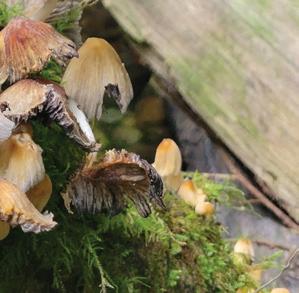
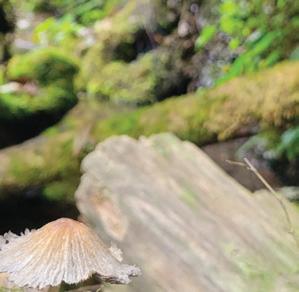

◊ Go hike Strawberry Rock with some friends
◊ Looking for snow? Drive east on Highway 299
◊ Explore the wonders in the Trees of Mystery, $25 per person
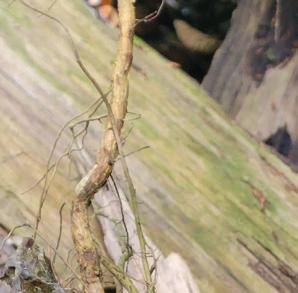


◊ Check out the many different natural parks and reserves for relaxing hiking trails
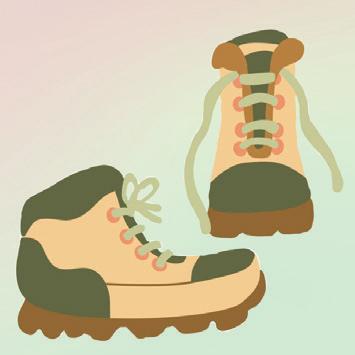
The J hours CCMP hours

Dec. 17 - Jan 7: Closed Jan. 8 - Jan 16: Normal hours Jan. 17 onward: Normal hours Dec. 17 - Jan 7: 11 a.m. - 6 p.m., CLOSED 12/25 & 1/1 Jan. 8 - Jan 16: 11 a.m. - 6 p.m. Jan. 17 onward: Normal hours
Outdoor Fo od Off- c ampus food
◊ Free food every Sunday, 4 p.m. at Arcata Plaza

◊ Warm up with some ramen at Japhy’s Soup and Noodles or with some pho at Pho Hoang
◊ Not sure if you're feeling sweet or savory? Order both at Renata’s Creperie
◊ Taste of Bim and Tandoori Bites are two other great options in Eureka for some tasty food
◊ The Arcata Scoop has a wide selection of ice cream flavors




◊ Dec. 16 3-8 p.m., Wing Wonderland Holiday Market in Mckinleyville
◊ Dec. 16 - 17 6:30-9:30 p.m. and Dec. 18 1:30-4:30 p.m., Nightlight: A Winter Solstice Story at Blue Lake Dell' Arte's Carlo Theatre
◊ Dec 17 6-9 p.m., live music at Holus Bolus at Redwood curtain brewery & tasting room in Arcata FREE
◊ Dec. 18 5-7 p.m., Christmas lighted tractor parade in Ferndale on Main St. FREE
◊ Dec. 18 12:30 p.m., Renaissance Cardio w/Mo H.D. FREE, $5 donation suggested
◊ Art sale at Arcata 10 a.m.- 4 p.m. Saturdays, Sundays, 10 a.m.4 p.m. Continues through Dec. 24
◊





Jan. 1st 11a.m. - 12 p.m., First Day Hike Weott Humboldt Redwoods State Park FREE
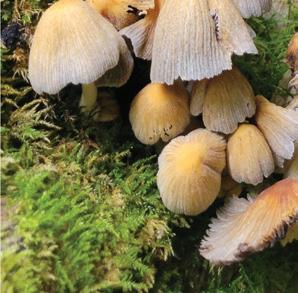
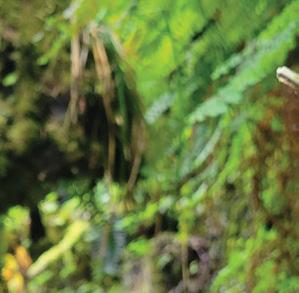
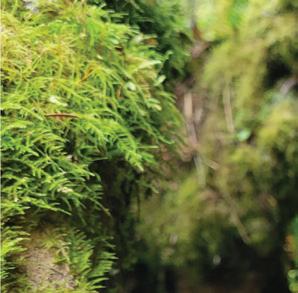
◊ $5 movie tickets on Tues. at the Mill Creek Cinema in Mckinleyville

10 |El Leñador | diciembre 2022| ellenadornews.com
Photo taken at Fern Canyon in Prairie Creek Redwoods State Park | Photo by Evelyn Bañuelos
by Evelyn Bañuelos
A look into the controversial history of Dr. Martens
by Chaela Gilman
Stomping through rain, snow or shine, Dr. Martens guard your feet like armor with their vintage style leather and chunky rubber soles. After nearly 75 years, the shoe continues to carry its weight. This time, in the closets of Gen Z.

“I think they’re kind of like a timeless classic,” said Angela Schumard, a freshman majoring in sociology at Cal Poly Humboldt. “Like who doesn’t love a nice pair of solid boots?”
But how can something so obsolete as a shoe become so politically-charged? Well, here’s what you probably didn't know about your favorite shoe.
Invented in 1945 in Seeshaupt, Germany by Dr. Klaus Maertens, a 25-year-old Nazi soldier, the shoe was designed with the intention to help aid Dr. Maerten’s recovery after a broken foot. Using military supplies to produce the shoe, Dr. Maertens and his friend, Dr. Herbert Funk, went into business selling the shoe mainly to older women.
An English company bought the license for Dr. Maerten’s air-cushioned sole in 1960 and after making a few changes, the iconic eight-holed 1460 boot was born. The boot was built for comfort and durability. The 1460 boot began by uniforming police, postmen and factory workers in the U.K.

Doctor Catherine Davies, a senior lecturer in visual culture at Cardiff Metropolitan University and author of “Smells like Teen Spirit: Channeling subcultural traditions in contemporary Dr. Martens branding” said, “In the late 60’s and 70’s in the U.K., these types of boots that were associated with postal workers, police officers, were claimed as street style by subcultural tribes such as punks and goths, and the skinheads.”
Dr. Davies went on to state, “It’s important to know they were an anti-fashion statement by subcultural tribes and they were modified and customized accordingly.”
The punks graffitied their docs, the skinheads customized their laces and the goths painted the yellow bits black.
At the time, Dr. Davies, who has done much research on the history of the brand and their advertising tactics, noted that all of this was happening independent of the brand itself and the brand was not happy being known for these associations.

“There was a small contingent of the subculture [of skinheads] that were racist, that were part of the national front,” Dr. Davies said. “Any form of youth expression has a uniform. Therefore, there was a sense that Dr. Martens were metonymic or stood for these particular, problematic attitudes.”
According to Dr. Davies, though, not all skinheads were racist or violent and the spread of this narrative was mainly a portrayal by the British media of alternative groups being problematic.
Growing up in the 80’s herself, Dr. Davies recalled how as a teenager you
Growing up within skinhead culture in High Wycombe county, Gavin Watson began documenting skinheads and their ‘docs’ at the age of 14. Now, widely known for his photos of skinhead culture, Watson published the monograph, Skins, in 2007 and has worked with the company itself, Dr. Martens.

From left to right: young skinhead pictured in Dr. Martens. Dr. Martens 1460 boot with ‘skinhead-style lacing’ [both taken by Watson], and Schumard’s ‘Jadon boot smooth leather platforms’ below. | Photos by Gavin Watson & Cut-out by Chaela Gilman
weren’t allowed to wear them to school because of their associations with violence.
Often football stadiums would ask guests to take off their Dr. Martens before entering the stadium as many of them had steel-toe caps. “They were literally a weapon,” Dr. Davies said.

When asked how she feels about the controversial history of the brand in association to skinheads, Schumard said, “Doc Martens are a little bit more edgy in style I feel so it definitely ties in with that kind of culture they were based off of and used for. But I don’t know if I see that resonating today at all, which is good, but the fact it did exist at one point is very concerning.”
Reconfiguring the associations of the past, Dr. Martens has now utilized its historical ties to British youth subcultures to sell modern-day consumers a sense of vintage individuality.
“You buy rebellion with these boots now,” Dr. Davies said.
Life & Arts La Vida y Los Artes ellenadornews.com | diciembre 2022 | El Leñador| 11
Soy Artista: Indigenizing spaces through art
by Angelina Ramirez Peirano
With long black and silver feathers jumping off the wall, Alme Allen’s mural titled, “We Been Healing That Way", displays Karuk and Yurok culture in a way that is meant to educate others and honor his community. Through his lens he applies culture in each piece. Allen is able to showcase his Indigenous culture and start conversations in spaces that may not typically speak on topics about land acknowledgements and healing the earth.
The “We Been Healing That Way” mural was painted as a tribute to Karuk activist Brian D. Tripp, taking elements and stylistic choices from four of his original works of art. The final mural design was approved by Tripp prior to his passing.
“The connection with myself and Brian is a lot about our culture and a lot about our community so it’s deeper than just art,” Allen said. “Art is the thing that you see, but for us as Native people the culture and making sure that that’s secured and being taught and retaught is important.”

The mural is painted with a rockpacker figure, traditional to the White Deerskin dance, who is holding out a ceremonial
obsidian blade. In the background is a mountain, representing the center of the world for Karuk culture. The entire composition of the rockpacker in the mural points south towards Wiyot land as a land acknowledgement.

“I had my own interpretation of what
the Clarke Museum in Eureka. This project was Allen’s first large work with Tripp in 2000. 21 years later, Allen and direct family members of Tripp worked together to reinstall “The Sun Set Twice on the People That Day”.
“It makes it intergenerational,” Allen
been around him.
“My dad and my uncles were these Indian logger guys of the day in the 70’s and they would have these rough carved ones with the chainsaw laying around the yard and it’d be like Indigenous lawn furniture,” Allen said.
In 2000, he took his own shot at carving a redwood chair that he saw around in his childhood. Later in 2017, he was able to have his chair carvings molded and created into concrete replicas for the Yurok Tribe on the Klamath Blvd. project, funded by the National Endowments for the Arts. His concrete carving replicas are now on display at the San Francisco Academy of Sciences.
I wanted to go for and I was really happy he chose the black and silver, which was really tributing that era from the mid 80’s when he used a lot of stark contrast: black, white, black, silver,” Allen said.
“We Been Healing That Way” is a second Tripp-Allen collaborative mural, the first being “The Sun Set Twice on the People That Day”, which is hung outside


said. “In a lot of the ways this artform came to me I am now passing it on to my daughter, my niece, nephew, the people who are working with us.
Allen has also intertwined his artistic eye with his craftsmanship skills through redwood carving. Since his childhood, he has always seen his father and uncle carving redwood chairs. Art has always
Growing up in artistic spaces, Allen’s passion for art began early in his childhood. Now, he’s able to pass on his legacy to the next generation by collaborating with his daughter, nieces, nephews and other youth groups, similar to how Tripp mentored him. He continues to keep memories and culture alive through his artistic talents.

Keep up with Allen and his latest projects by following him on Instagram @upriverallen.


Life & Arts La Vida y Los Artes 12 |El Leñador | diciembre 2022| ellenadornews.com
Alme Allen poses in front of his mural mockup titled "Moving It Forward" at his at-home studio. | Alme Allen posa frente a su maqueta mural titulada "Moving It Forward" en su estudio en casa. | Photo by/por Abraham Navarro
The connection with myself and Brian is a lot about our culture and a lot about our community so it’s deeper than just art.”
-Alme Allen, Artist
“
The mural "We Been Healing That Way" stands in the parking lot behind the Jacoby Storehouse in Arcata. to detrás del almacén Jacoby en Arcata. | Photo by/por Abraham Navarro
Soy Artista: Indigenización espacios a través del arte
por Angelina Ramirez Peirano traducido por Sandy Ceja
Con largas plumas negras y plateadas saltando de la pared, el mural de Alme Allen titulado "We Been Healing That Way", muestra la cultura Karuk y Yurok de una manera que pretende educar a otros y honrar a su comunidad. A través de su lente aplica la cultura en cada pieza. Allen es capaz de mostrar su cultura Indígena e iniciar conversaciones en espacios que típicamente no hablan sobre temas de reconocimientos de tierras y sanación de la tierra.
El mural “We Been Healing That Way” se pintó como tributo al activista de Karuk Brian D. Tripp, tomando elementos y elecciones estilísticas de cuatro de sus obras de arte originales. El diseño final del mural fue aprobado por Tripp antes de su fallecimiento.


“La conexión entre mí y Brian tiene mucho que ver con nuestra cultura y nuestra comunidad, por lo que es más profundo que solo el arte,” dijo Allen. “El arte es lo que ves, pero para nosotros, como pueblos nativos es la cultura y nos asegurarnos de que esté seguro y se enseñe y se vuelva a enseñar una y otra vez es importante.”
El mural está pintado con una figura rockpacker, tradicional de la danza White Deerskin, que sostiene una hoja
de obsidiana ceremonial. En el fondo hay una montaña, que representa el centro del mundo para la cultura Karuk. Toda la composición del rockpacker en el mural apunta al sur hacia la tierra Wiyot como un reconocimiento de la tierra.
“Tenía mi propia interpretación de
Museo Clarke en Eureka. Este proyecto fue el primer gran trabajo de Allen con Tripp en 2000. 21 años después, Allen y los familiares directos de Tripp trabajaron juntos para reinstalar "The Sun Set Twice on the People That Day".
“Lo hace intergeneracional,” dijo
"Mi padre y mis tíos eran estos indios leñadores de la época, en los años 70, y tenían estos toscos tallados con la motosierra tirados por el patio y eran como muebles de jardín Indígenas," dijo Allen.
En el 2000, tuvo su propia oportunidad de tallar una silla de secoya que vio en su infancia. Más tarde, en 2017, pudo moldear sus tallas de sillas y convertirlas en réplicas de concreto para la tribu Yurok en Klamath Blvd. Proyecto, financiado por el Fondo Nacional de las Artes. Sus réplicas talladas en concreto están ahora en exhibición en la Academia de Ciencias de San Francisco.

lo que quería hacer y me alegró mucho que eligiera el negro y el plateado, que en realidad era un tributo a esa época de mediados de los 80, cuando usó muchos contrastes marcados: negro, blanco, negro, plata ,”dijo Allen.
“We Been Healing That Way” es el segundo mural colaborativo de Tripp-Allen, el primero es “The Sun Set Twice on the People That Day”, que se cuelga fuera del
Allen. “En muchas de las formas en que esta forma de arte me llegó, ahora se la pasó a mi hija, mi sobrina, mi sobrino, las personas que trabajan con nosotros.”
Allen también ha integrado su ojo artístico con sus habilidades artesanales a través del tallado en secoya. Desde su infancia, siempre ha visto a su padre y a su tío tallar sillas de madera de secoya. El arte siempre ha estado a su alrededor.
Al crecer en espacios artísticos, la pasión por el arte de Allen comenzó a principios de su juventud. Ahora, puede transmitir su legado a la siguiente generación colaborando con su hija, sobrinas, sobrinos y otros grupos juveniles, de manera similar a como Tripp lo guio.
Sigue manteniendo vivos los recuerdos y la cultura a través de sus talentos artísticos.
Manténgase al día con Allen y sus últimos proyectos siguiéndolo en Instagram @upriverallen.
Life & Arts La Vida y Los Artes ellenadornews.com | diciembre 2022 | El Leñador| 13
La conexión entre mí y Brian tiene mucho que ver con nuestra cultura y nuestra comunidad, por lo que es más profundo que solo el arte.”
-Alme Allen, Artista
“
Arcata. | El mural "We Been Healing That Way" se encuentra en el estacionamien-
En 2021, Alme Allen, Julian Lang, Lyn Risling, Amtyirahm Allen, Karamachay Tripp, Eli Hensger-Aubrey trabajaron en el mural "The Sun Set Twice On The People That Day" para el Eureka Street Art Festival. | Foto por Karina Ramos Villalobos | In 2021, Alme Allen, Julian Lang, Lyn Risling, Amtyirahm Allen, Karamachay Tripp, Eli Hensger-Aubrey worked on "The Sun Set Twice On The People That Day" mural for the Eureka Street Art Festival.










14 |El Leñador | diciembre 2022| ellenadornews.com La Vida y Los Artes







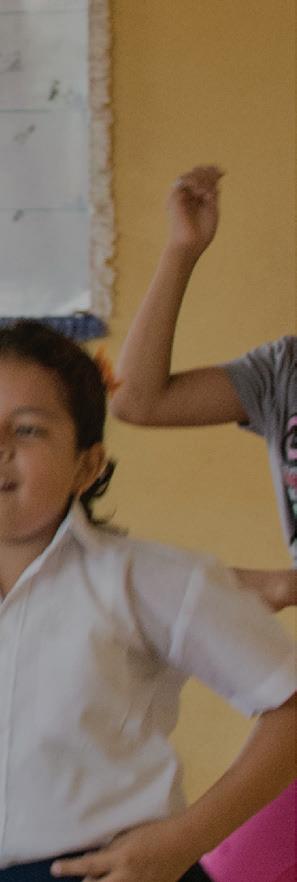















La Vida y Los Artes ellenadornews.com | diciembre 2022 | El Leñador| 15
Humboldt surfer donates gear to kids in Mexico
by Frank Rocha

The ocean has always been a big part of Arturo Tamayo’s life growing up in the city Acapulco, a major seaport in the state of Gurrero in Mexico. The city is located in a tropical bay with lush jungles and abundant waters.
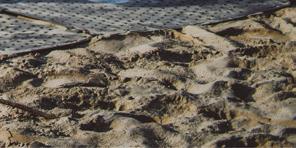
Tamayo’s love for the ocean came from growing up in his hometown, which made him take up surfing, engulfing himself into the surfing community. He moved to Humboldt County in 2017 after meeting and dating his now wife, Kinu. The couple currently have three children, for which Arturo mentions they are officially “Humboldt Kids.”
In late 2018, the family took a road trip to Mexico. Growing up in the country, Tamayo understands and recognizes
the need that small coastal communities require. The couple decided to bring along with them used surfboards and surf equipment from their friends to a low-income community near Acapulco. It was also a collaboration with Surfeando Sonrisas, a nonprofit supporting kids with disabilities.


The People Surf Project was formed after the trip “to bring free surfboards and equipment to kids in impoverished regions in Mexico, to motivate them to stay healthy, out of trouble and connect with the environment,” Tamayo said.
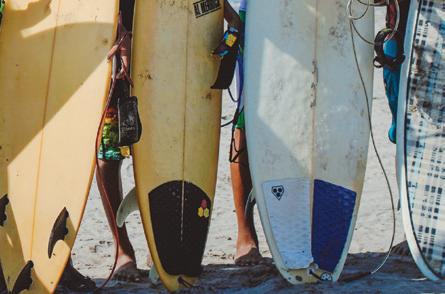
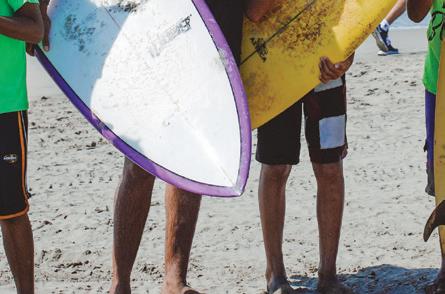
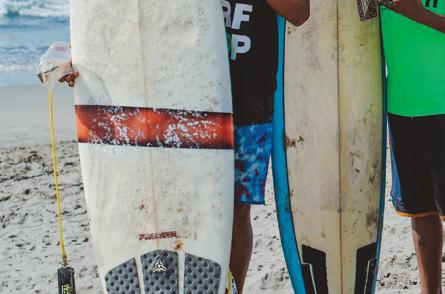


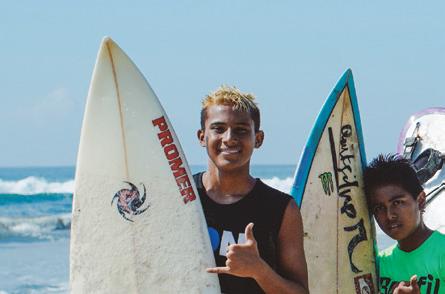

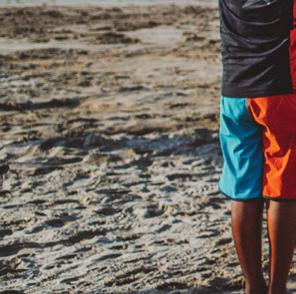
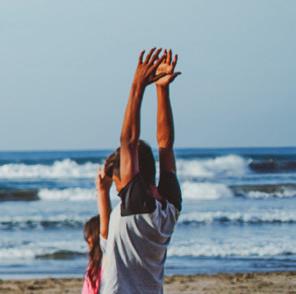

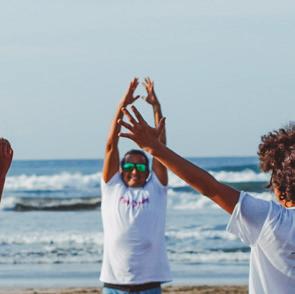
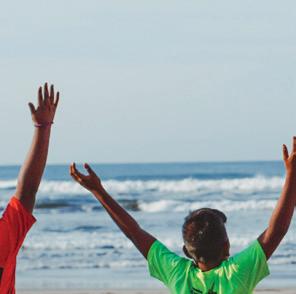










Currently the couple is working along with a small team of friends and the coastal beach communities in Mexico where the surfboards and equipment are being delivered to. The team is currently in the

stages of fixing 70 boards and preparing them for delivery in the next few months to different communities down the coast such as Punta Abreojos Baja California, Mazatlan, Sayulita, Pascuales, Nexpa, La Saladita, Playa Bonfil, Chacahua and Puerto Escondido, according to Tamayo.


The project team members include Humboldt County locals as well as members down in Mexico.
Tamayo mentions that the reusing and repairing of surfboards is an environmentally-friendly option that keeps them away from the dump and could be repurposed for another surfer.



In the next two to five years, he hopes the People Surf Project will be able to deliver more than 150 surfboards to Mexico
every year, expanding the relationships and creating positive changes within the beach communities.

Tamayo hopes to also create the first Summer Beach Program in Humboldt in the near future. Its main purpose is to bring kids, especially Black, Brown, Indigenous and diverse communities, together to learn surfing.

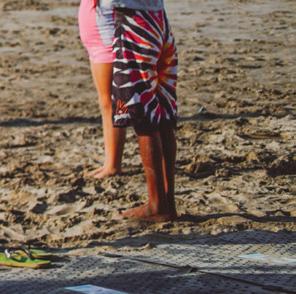
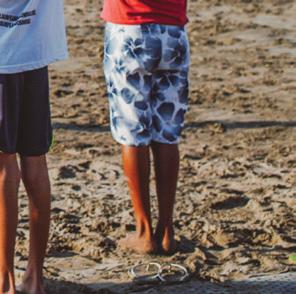
The People Surf Project currently has a few events and a GoFundMe where they received some donations to bring the surfboards down to Mexico.

To keep up with the People Surf Project, check out their Instagram @thepeoplesurfproject.

La Vida y Los Artes 16 |El Leñador | diciembre 2022| ellenadornews.com
In 2018, Tamayo and friends donated surfboards and equipment to a local beach community near Acapulco, Mexico. | Photo courtesy of León Villagómez
In 2018, Tamayo and friends held yoga and breathing exercises for youths at the local beach community near Acapulco, Mexico. | Photo courtesy of León Villagómez
Tamayo's trip to Mexico in 2018 invited 17 kids between the ages of 7 and 16 that took part in this experience. In collaboration with Surfeando Sonrisas, a nonprofit supporting kids with disabilities. | Photo courtesy of León Villagómez
Surfista de Humboldt dona equipo a niños en México

El océano siempre ha sido una gran parte de la vida de Arturo Tamayo, creciendo en la ciudad de Acapulco, un importante puerto marítimo del estado de Guerrero en México. La ciudad está localizada en una bahía tropical con exuberantes selvas y abundantes aguas.
El amor de Tamayo por el océano vino de crecer en su ciudad natal, lo que le hizo tomar el surf, sucumbiendo a sí mismo en la comunidad surfista. Se mudó al Condado de Humboldt en 2017 después de conocer y salir con su ahora esposa, Kinu. Actualmente la pareja tiene tres hijos, por lo que Arturo menciona que oficialmente son “Humboldt Kids.”
A finales de 2018, la familia hizo un viaje por carretera a México. Al crecer en el país, Tamayo comprende y reconoce
la necesidad que requieren las pequeñas comunidades costeras. La pareja mutualmente decidió llevar tablas de surf usadas y un equipo de surf de sus amigos a una comunidad de bajos ingresos cerca de Acapulco. Igualmente, fue una colaboración con Surfeando Sonrias, una organización sin fines de lucro que apoya a niños con discapacidades.


El People Surf Project fue formado después del viaje “para llevar tablas de surf y equipo gratis a los niños de regiones empobrecidas de México, para motivarlos a mantenerse sanos, alejados de malas influencias y conectarse con el entorno,” dijo Tamayo.
La pareja está trabajando junto con un pequeño equipo de amigos y las comunidades costeras de la playa en México,
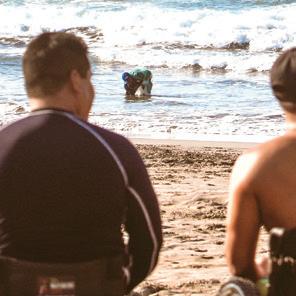
donde se están entregando las tablas de surf y el equipo. El equipo se encuentra actualmente en las etapas de fijar 70 tablas de surf y prepararlos para su entrega en los próximos meses a diferentes comunidades de la costa como Punta Abreojos Baja California, Mazatlán, Sayulita, Pascuales, Nexpa, La Saladita, Playa Bonfil, Chacahua y Puerto Escondido, según Tamayo.


El equipo del proyecto incluye personas locales de Humboldt así como miembros de México.
Tamayo menciona que la reutilización y reparación de tablas de surf es una opción respetuosa con el medio ambiente que las mantiene alejadas del vertedero y podría ser reutilizada para otro surfista.

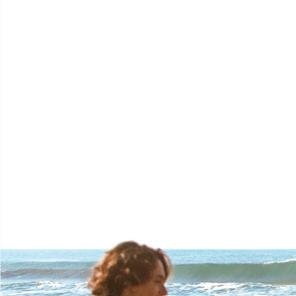


En los próximos dos a cinco años, él espera que el People Surf Project sea capaz de entregar más de 150 tablas de surf a México cada año, expandiendo las relaciones y creando cambios positivos dentro de las comunidades de playa.
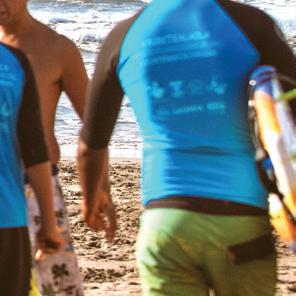

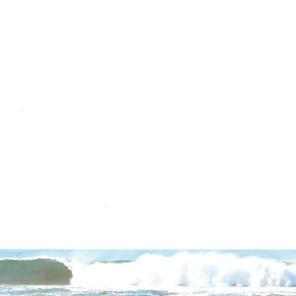


Tamayo aspira crear el primer Programa de Verano de Playa en Humboldt en un futuro cercano. Su propósito principal es reunir a los niños, especialmente niños de color y pesonas Indígenas y diversas comunidades, para aprender surf.
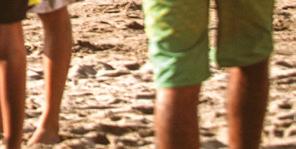

El People Surf Project actualmente tiene algunos eventos y un GoFundMe donde recibieron algunas donaciones para traer las tablas de surf a México.
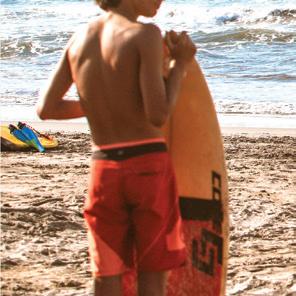
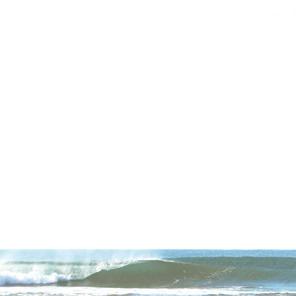
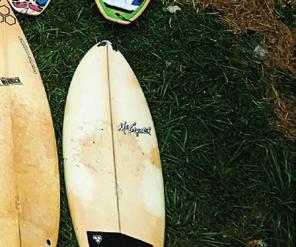






Para mantenerse al día con el People Surf Project, echa un vistazo a su Instagram @thepeoplesurfproject.





Life & Arts La Vida y Los Artes ellenadornews.com | diciembre 2022 | El Leñador| 17
por Frank Rocha traducido por Jennifer Diaz Axomulco
En 2018, Tamayo realizaron clases de surf para jóvenes. | Foto cortesía de León Villagómez People Surf Project prepara 70 tablas de surf para en México. | Foto cortesía de León Villagómez
La visita de Tamayo en 2018 reunió a los niños locales para un día divertido y educativo de actividades al aire libre cerca de Acapulco, México. | Foto cortesía de León Villagómez









18 |El Leñador | diciembre 2022| ellenadornews.com La Vida y Los Artes
'Ziwe': Slays satire in late-night series

 by Karina Ramos Villalobos
by Karina Ramos Villalobos


Ziwe Fumudoh is an actress, model and popstar who went viral in 2017 for her YouTube series “Baited with Ziwe” which lead to her current masterpiece.“Ziwe” has brought raw-authentic content like no other show and has conversations about race, class, sexuality and gender.
It’s not your regular sit-down interview or late-late show, Fumudoh is bringing her own written creations to life through comedy and an iconic-pink style. She is a queen and slays. Her confidence creates a unique experience on screen while interviewing many different celebrities, actors and popular activists, such as Andrew Yang, Mia Khalifa, Chet Hanks, and more—two seasons worth of hilarious, jaw-dropping and confrontational episodes.
Fumudoh truly embodies her comedic persona and has an alter-ego personality that can sing. You will see Fumudoh providing amazing music videos to songs she creates to add to her segments. Each song has meaning and connection to the episode. My personal favorite song is “Am I Gay?” which is played in season two episode six, the music video is phenomenally done and visually engaging with different styles of animation, outfits and actors involved.
This series challenges traditional Western norms when it comes to expanding conversations about race. Fumudoh asks each interviewee a series of questions that often make them uncomfortable or find it difficult to answer. Some questions Fumudoh has asked are “How many Black friends do you have?" and "What do you hate more, slow walkers or racism?”
She asks specific questions depending


on her interviewee especially if the interviewee has a history of being canceled or an experience with callout culture— meaning a way of behaving in a society or group, especially on social media, in which it is common to completely reject and stop supporting someone because they have said or done something that is offensive. Fumudoh creates an atmosphere where her interviewee is authentically themselves for viewers to see and highlight the types of responses she gets based on the call-out questions she asks.
Fumudoh was raised in Lawrence, Massachusetts, with her family who emigrated from Nigeria to the U.S. and she is the second of three children. She graduated from Northwestern University in 2014 with a bachelor's degree in arts in radio, television, and film and African American studies. Soon after college, she instantly had different writing opportunities and has been published in The Daily Dot as a contributor, a writer/ host for the Cafe, a writer for Tesla and a writer-feature and video contributor for the Onion, INC.

Personally, it’s inspirational and empowering to see the work of Fumudoh as a person who is a journalist and storyteller. Even if it’s not considered journalism to some, I see this as a modern-authentic way to have deep conversations about critical topics that the world doesn’t always want to acknowledge and a chance to challenge Western ideologies in journalism.



Check out the most iconic pink-styled sit-down interviews with skits that will make you laugh and critically think. “Ziwe” can be streamed now on Showtime, Hulu, or Amazon Prime.
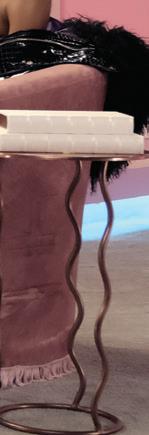











ellenadornews.com | diciembre 2022 | El Leñador| 19 La Vida y Los Artes
Ziwe Fumudoh interviews Julia Fox in episode called "Men!" | Photo courtesy of Gwen Capistran
Healing together through community Sanar juntos a través de la comunidad
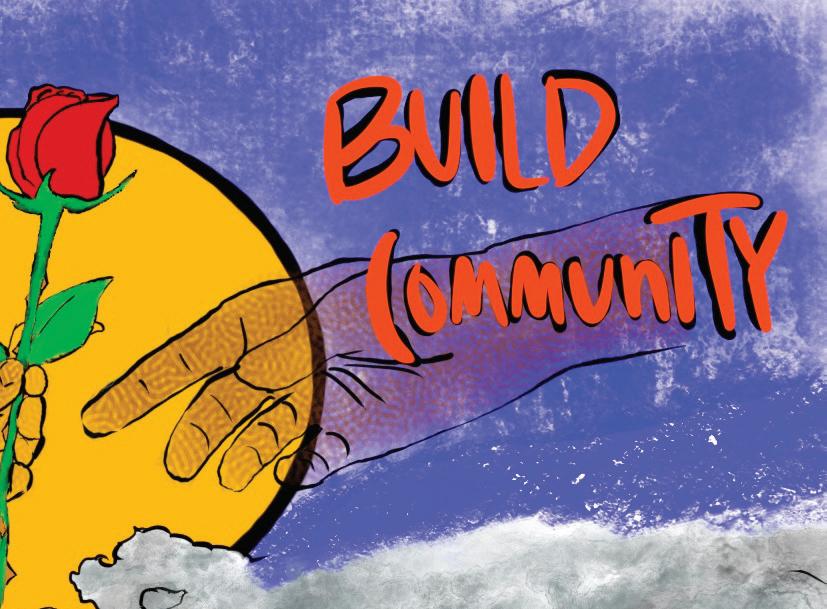 by Abraham Navarro
por Abraham Navarro traducido por Desiree Osornio
by Abraham Navarro
por Abraham Navarro traducido por Desiree Osornio
Being a person of color at Cal Poly Humboldt is hard and it’s even harder without community. I was making friends during my first year, but I still felt so isolated. I was enjoying what they were teaching me in classes but it was hard to stay engaged with the coursework. As much as I felt accomplished to have graduated from community college and moved so far for university, I was struggling to fit in. I needed a community of people who understood my struggle.
It wasn't until I joined El Leñador this semester that I finally felt I had come across a community for me. I felt validated in my struggles. I wasn’t the only one to feel weird when feeling glances while exploring town or feeling out of place working in predominantly-white workspaces. I wasn’t the only one who knew it was wrong, who knew I wasn't doing anything to deserve anyone's gaze, other than being unapologetically-brown and occupying space in their presence.
But breaking it down with my friends and discussing the racist white attitudes we come across on our journeys made me feel less powerless and alone. With these spaces in my life I can walk through with my chin held high with pride, knowing that I am part of a community and that together we are strong.
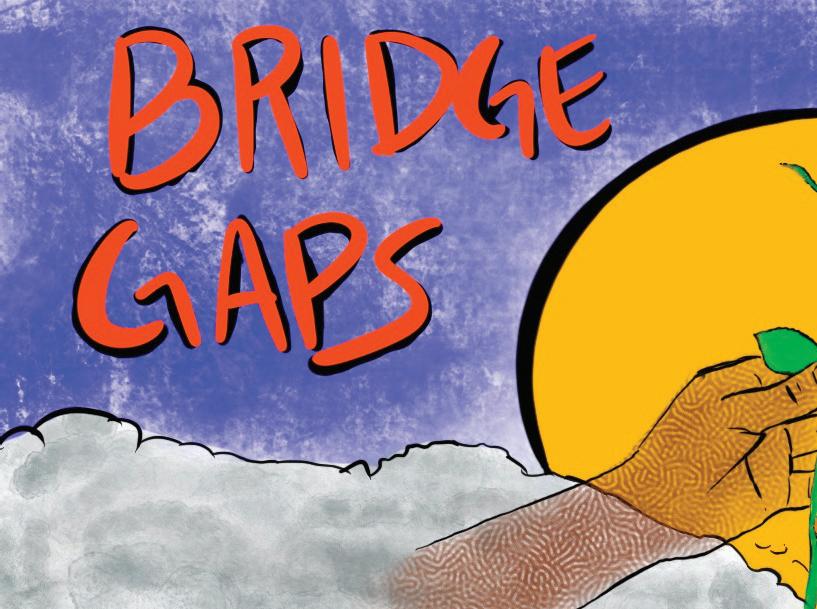
Community is not just important for my well being and the wellbeing of people of color, but it is a means of survival. In our
communities we are aware of the issues of the oppressed. We talk about them and sometimes we organize in response to them. If we do not speak up about our problems, our rights get taken away.
It is important for our communities to organize, to march in the streets and on campus often and to speak out against our oppressors. Most importantly, we need to share the truth about our culture and the historic erasure and genocide that preceded us and affected our ancestors. We need to come to terms with how that history still affects us today. We need to remember our past and the suffering of our ancestors to ensure that histories do not repeat themselves.
We are fostering a new generation that will be able to recognize this as the harmful echoes of a dwindling colonial past and focus on a more inclusive community where people are celebrated for their differences and the common grounds we all come together over.
At the end of the day we all face the same problems as a part of a global community. We can all still do so much better to be more open-minded and become more involved in local communities with compassion, to learn and understand each other better, because while the system might thrive from taking advantage of the culture and labor of people of color, our communities aren’t as oppressive.
Ser una persona de color en Cal Poly Humboldt es difícil y es aún más difícil sin comunidad. Hice amigos durante mi primer año, pero todavía me sentía muy aislado. Disfrutaba de lo que me enseñaban en las clases, pero era difícil mantenerme involucrado con el trabajo del curso. Por mucho que me sintiera realizado por haberme graduado en el colegio comunitario y haberme trasladado tan lejos para ir a la universidad, tenía dificultades para encontrar mi sitio. Necesitaba una comunidad de personas que entendieran mis batallas.
No fue hasta que me uní a El Leñador este semestre que finalmente sentí que había encontrado una comunidad para mí. Me sentí validado en mis dificultades. No era el único que se sentía raro al sentir las miradas mientras exploraba la ciudad o que se sentía fuera de lugar al trabajar en espacios de trabajo predominantemente blancos. No era el único que sabía que estaba mal, que sabía que no estaba haciendo nada para merecer la mirada de nadie, aparte de ser un moreno sin disculpa y ocupar un espacio en su presencia.
Pero el hecho de hablar con mis amigos y discutir sobre las actitudes racistas de los blancos con las que nos encontramos en nuestros caminos me hizo sentir menos impotente y solo. Con estos espacios en mi vida puedo caminar con la cabeza alta con orgullo, sabiendo que soy parte de una comunidad y que juntos somos fuertesLa comunidad no sólo es importante para mi bienestar y el de la gente de color, sino
que es un medio de sobrevivir. En nuestras comunidades somos conscientes de los problemas de los oprimidos. Hablamos de ellos y a veces nos organizamos en respuesta a ellos. Si no hablamos de nuestros problemas, nos quitan nuestros derechos.
Es importante que nuestras comunidades se organicen, que marchen en las calles y en los campus con frecuencia y que hablen contra nuestros opresores. Y lo que es más importante, necesitamos compartir la verdad sobre nuestra cultura y el borrado histórico y el genocidio que nos precedió y afectó a nuestros ancestros. Tenemos que aceptar cómo esa historia todavía nos afecta hoy. Necesitamos recordar nuestro pasado y el sufrimiento de nuestros ancestros para garantizar que las historias no se repitan.
Estamos cultivando una nueva generación que será capaz de reconocer esto como los ecos dañosos de un pasado colonial en decadencia y de centrarse en una comunidad más inclusiva en la que se celebre a las personas por sus diferencias y por los motivos comunes que nos unen a todos.
A fin de cuentas, todos nos enfrentamos a los mismos problemas como parte de una comunidad global. Todos podemos hacer mucho más para ser más abiertos de mente e involucrarnos más en las comunidades locales con compasión, para aprender y entendernos mejor, porque mientras el sistema puede prosperar aprovechándose de la cultura y el trabajo de la gente de color, nuestras comunidades no son tan opresivas.
Opinion Opinión 20 | El Leñador | diciembre 2022| ellenadornews.com
Illustration by Abraham Navarro
Ilustración por Abraham Navarro
Lack of transparency with student journalists
by El Leñador Staff
As a student-run newspaper, it is our duty to notify the students of all that is happening on campus and in our community. This becomes incredibly difficult when the Cal Poly Humboldt administration cuts off communication and access to clear information, fostering an unhealthy dynamic between student journalists and the school we attend.
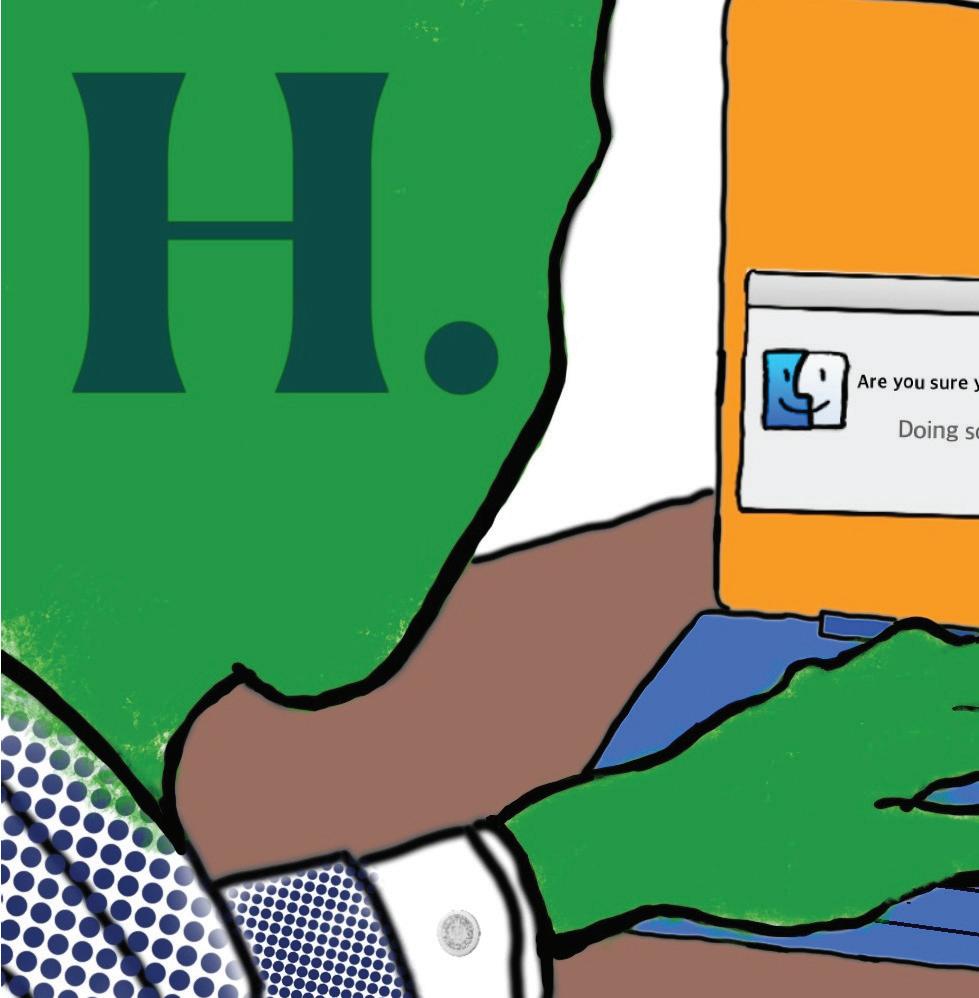
Our role as a publication is important because we foster the checks and balances on campus and in the community. Without us, students and community members wouldn’t voice their concerns with campus.
The fact of the matter is student journalists should not be seen as separate from other journalists; we are real journalists and should be treated with such respect. This is a real publication with a real audience and we take our roles seriously, meaning that if administration wouldn’t treat journalists from outside publications like this, they shouldn’t be doing that with us as well. As a student-run publication on campus, it is
especially important that there be transparency and communication between us and administration.
Our roles aside, however, we are also students on this campus.
As students, we are asking questions that
that accomplish?

It seems that communication between students and administration is becoming much more scarce. If we’re paying our tuition, why can’t we know what’s going on? We pay this school’s bills.
this big corporate entry since it became a Cal Poly and this is not the way to go about things. They get a bad reputation because of their robotic responses when it comes to addressing serious issues where CPH faculty, staff and students have been harmed.
In an attempt to find solutions to this growing issue, we recommend that administration sit with student publications to discuss how we can further facilitate conversation.
Our objective is to get timely, accurate information and avoid any misunderstandings. The last thing we’d want is for anything to get muddled along the way.
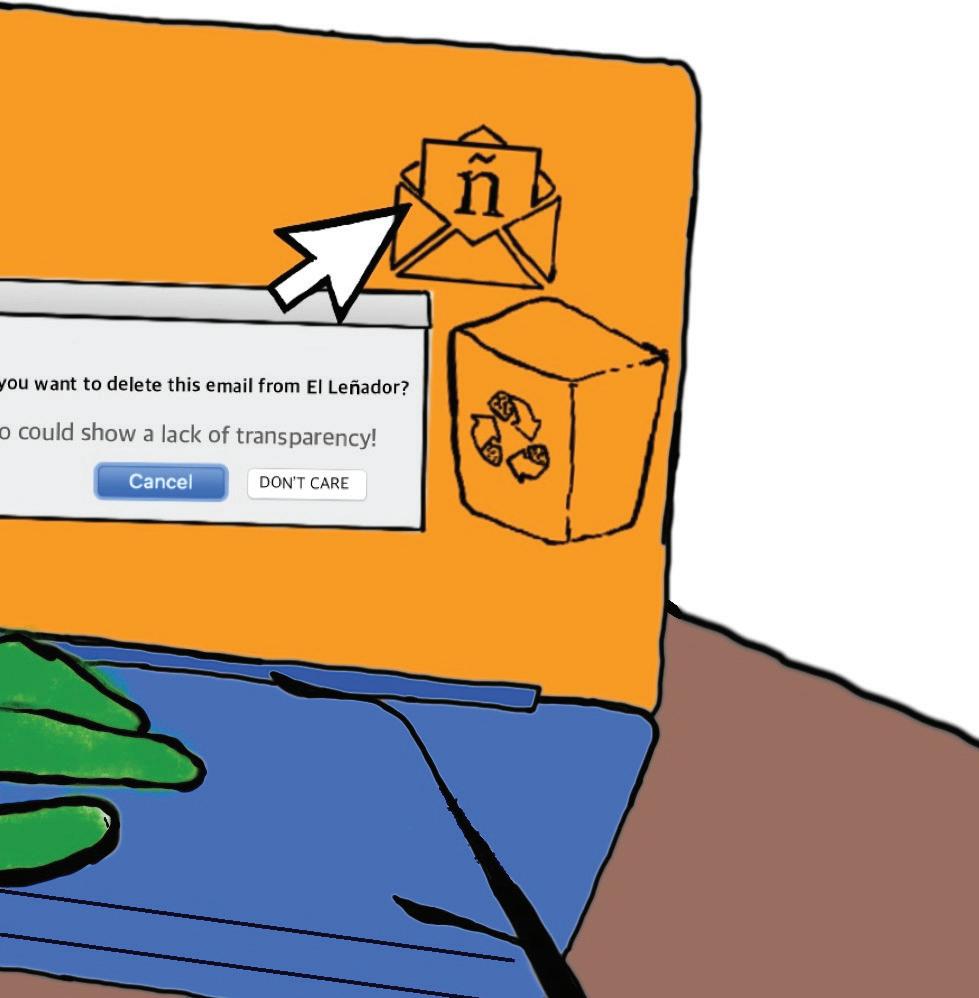
other students either do have or might have. We pay our dues in this school and have the right to some level of transparency when it comes to issues within campus. Rather than being defensive and saying we discredit the work our campus has done, why not just hear us out before yelling at us? What does
As journalists, we understand the importance of public relations but when it gets to the point where nothing’s being said and there are constant barriers between the press and answers to the questions we have, there’s a problem.
CPH throughout this semester has been
When administration rejects student media, they are denying the student population, as a whole, access to information about the very school they attend.
Opinion Opinión ellenadornews.com | diciembre 2022 | El Leñador| 21
Illustration by Guillermo Noe Salazar, Abraham Navarro & Peyton Leone
student
student population,
access
information.”
When admin rejects
media, they are denying the
as a whole,
to
“
Ricardo Lara Nava | Editor in Chief

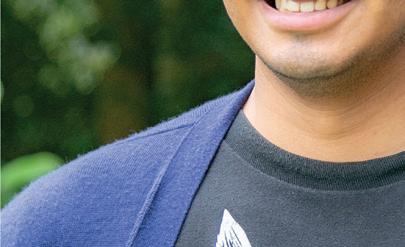
Journalism & English | Senior
Q:What’s your favorite part about being on staff?
El Leñador is more than a newspaper, it is a community. Working with staff members on shaping stories and during production builds a connection within the newsroom that is very family-like.
Q: What are your hobbies?
In my down time, I write poetry and short stories, catch up on some reading and play da Ricardo.
Q: Favorite production snack?
I really enjoy drinking black coffee with packaged danish and Andrea’s apple crisps.
Message from the editor
Dear Readers,
I began my time in El Leñador running, literally. The first time I met our advisor Andrea was in front of Papa Murphy’s during the Justice for Josiah run in 2021 and in the middle of our conversation she said, “They're starting to go to the front,” and so I ran.
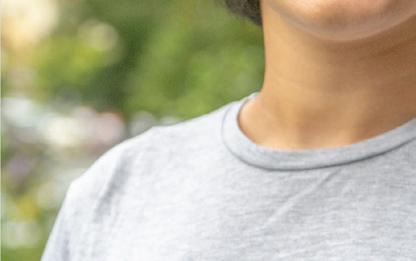
When I officially joined the publication I had no experience in the journalism field and it was very nerve racking turning in my first article but with the advice and help of the previous editor-in-chief’s (EIC) Alexandrea Gonzalez and Karina Ramos Villalobos it was turned into an award winning article. Without them I wouldn’t have had the experience and knowledge of what it takes to run this great publication.
This semester has been my first time as EIC and the first time since the beginning of the COVID-19 pandemic where we have had an Editorial team. It has been a major learning experience not just for me but for everyone else on staff.
I’d like to thank our community, staff, Kirby Moss and our fearless advisor Andrea Juarez.
See y’all next semester because I’m still EIC.

-



Fall 2022 Staff
Frank Rocha | Managing Editor

Journalism | Senior
Q:What’s your favorite part about being on staff?
Being a part of a team of highly-talented individuals who I am in awe of
Q:What are your hobbies?
I love gardening and cooking
Q: Favorite production snack?
That pineapple upside down cake.
Ramos Villalobos | Life & Arts Editor

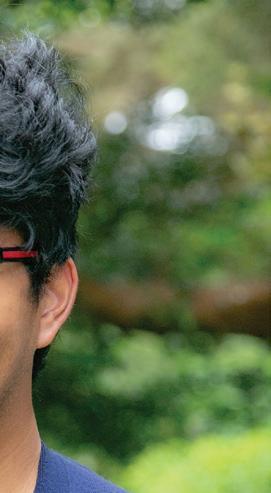
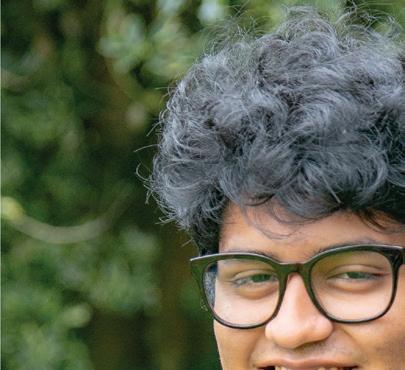
Journalism
| Senior
Q:What’s your favorite part about being on staff?
The community aspect, it has made this space empowering.
Q: What's your favorite story you’ve written?
All my Soy-Artista contributions.
Q: What are your hobbies? Listening to music, exploring and creating art
Kianna Znika | Opinion Editor
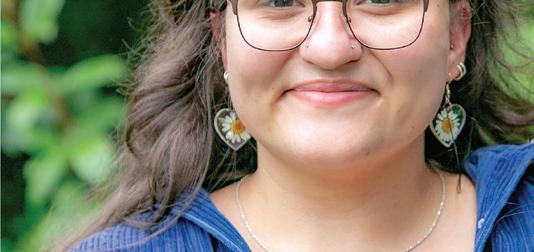
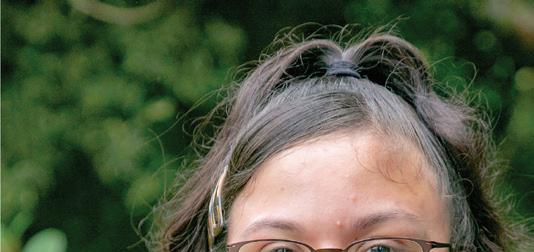
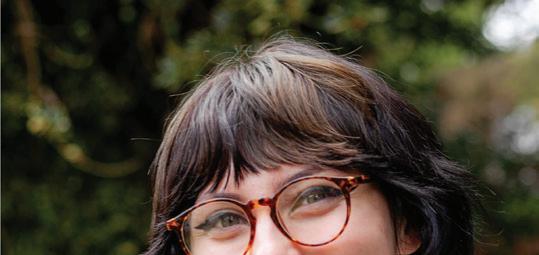
Journalism | Junior
Q:What’s your favorite part about being on staff? My favorite part about being on staff is honestly working with the rest of the team to produce the best paper we can. It’s a very supportive space.



Q: What are your hobbies?
I enjoy making/playing music and reading books about mental health.
Q: What has El Leñador taught you? El Leñ has taught me how to find my own voice as a journalist and how to use the power of the press for good in the community. It’s honestly made me fall back in love with writing for a publication.
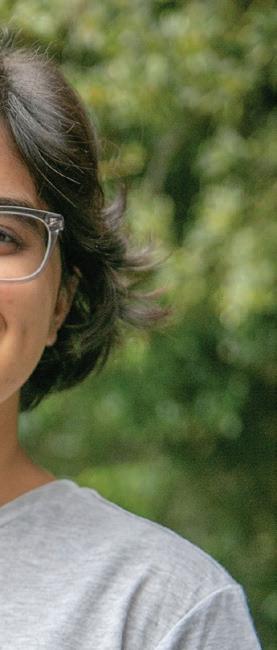
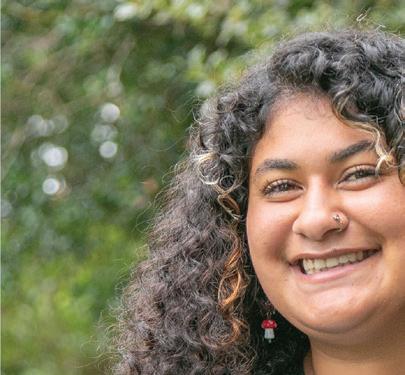 Ricardo Lara Nava
Ricardo Lara Nava
Senior |CRGS major & Women and Religous Studies minor
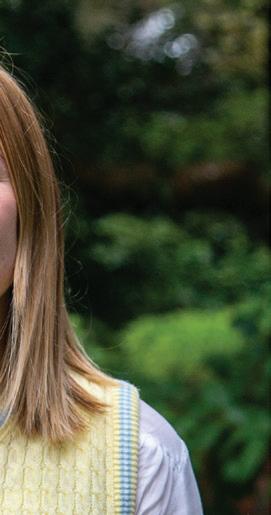
Q:What’s your favorite part about being on staff? Being part of a team that is passionate about serving others inspires and motivates me to keep helping the community. Through this paper I have been able to find my own sense of community up here being away from home.
Q: What are your hobbies?
Crochet, do my nails, draw, garden

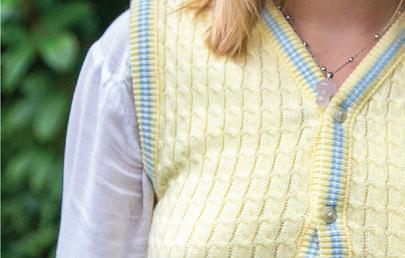


Q: Favorite production snack?
Maruchan cup of noodles with Valentina.
Evelyn Bañuelos | Reporter & Layout

Environmental Studies | Senior
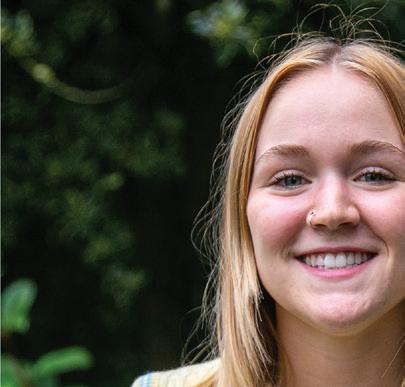




Q:What’s your favorite part about being on staff?
Making friends with everyone on staff, they were very welcoming and fun to work with.
Q: What's your favorite story you’ve written? My favorite story I’ve written was my Cocina Mariposa feature story.

Q: What are your hobbies?
Playing cozy games on my nintendo switch and reading.
Gilman | Reporter
Journalism
| Freshman
Q: What’s your favorite part about being on staff?
All the great people i get to work with and getting hands on experience as a reporter
Q: What are your hobbies?







Reading, art, and thrift shopping
Q: Favorite production snack?
Andrea’s cobbler :)
Raven E. Marshall | Reporter
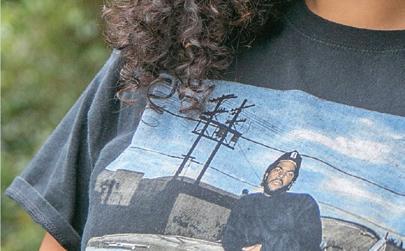
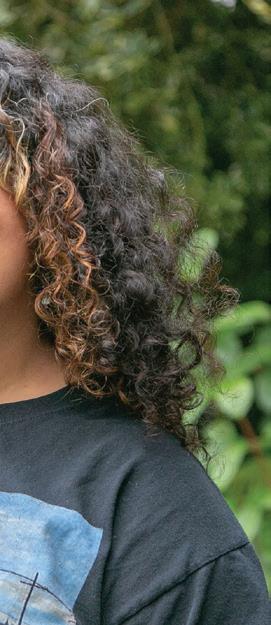
Journalsim | Senior
Q:What’s your favorite part about being on staff? The El Leñ team always makes me feel so welcomed and I appreciate being a part of a team that tells stories that are inclusive and rooted in culture, social justice and community.
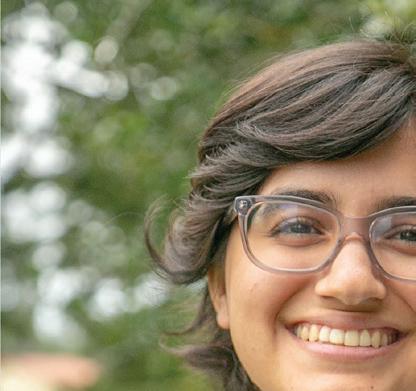
Q: What are your hobbies? Being nomadic, seeing the world, and making friends with all the neighborhood cats.

22 | El Leñador |diciembre 2022| ellenadornews.com
Karina
Chaela
Angelina Ramirez Peirano | News Editor
Q:What’s your favorite part about being on staff ? Learning how to produce multi-media & create meaningful stories that resonate with communities outside of campus.
Q: What's your favorite story you’ve written? I’ve enjoyed writing food recipes & federal DACA updates.
Q: What are your hobbies? Keeping up with celebrity pop-culture and cooking for friends and family

Fall 2022 Staff
English & literary publishing minor | Junior

Q:What’s your favorite part about being on staff?
Being surrounded by a supportive staff and producing amazing stories.
Q: What's your favorite story you’ve written? The Día de los Muertos story that I worked on with A.B. I loved how personal we were able to get with our article.
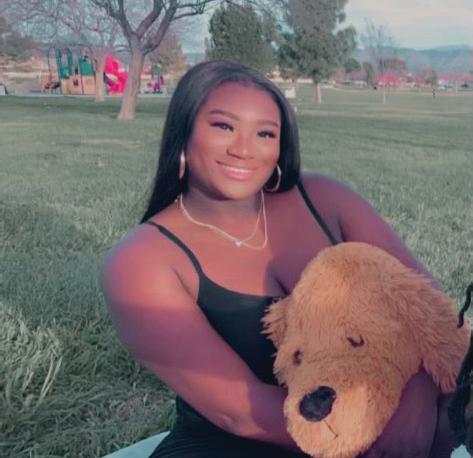
Q: What are your hobbies?
I play the bass, illustrate, and spend time with my dog Shay.
Desiree Osornio | Translation Editor
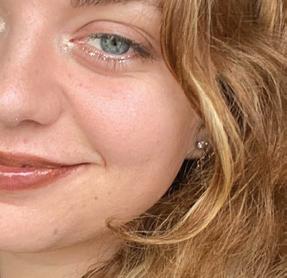
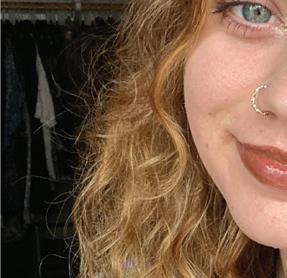

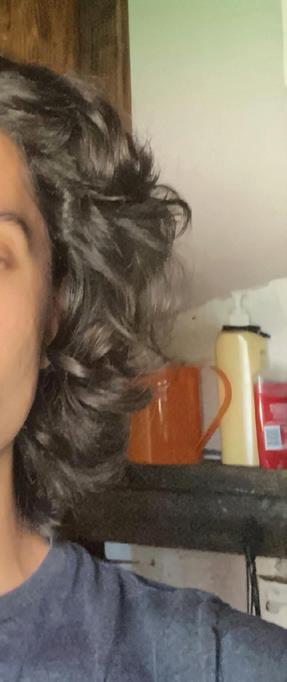


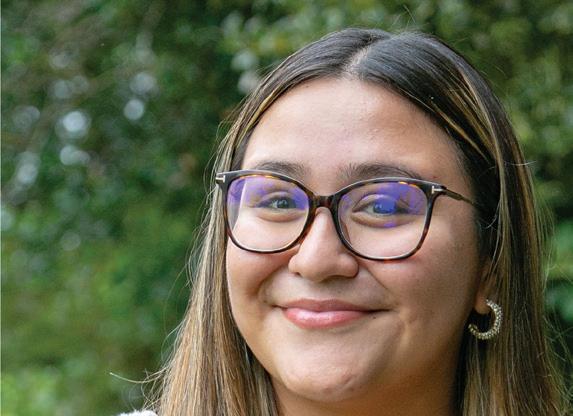

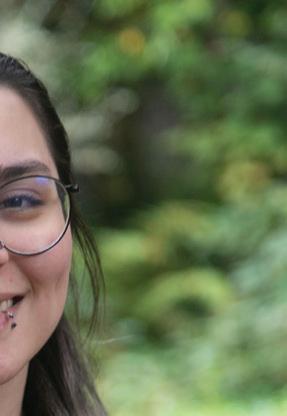
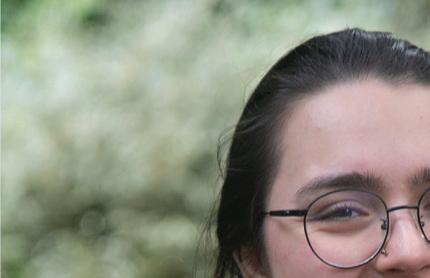
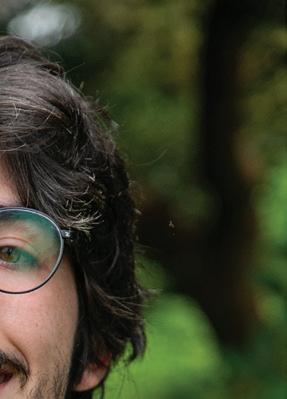
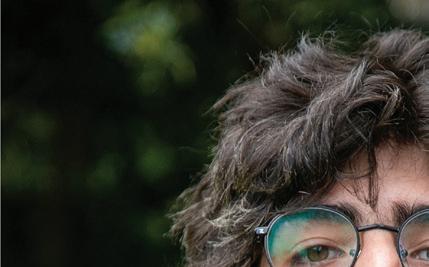
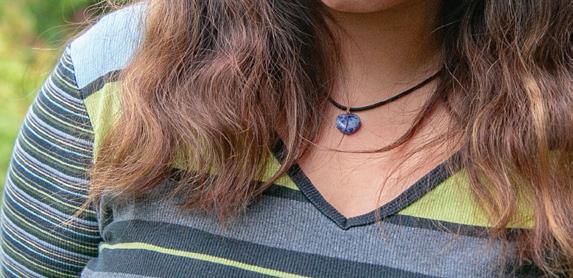


Biology



and Spanish | Senior
Q:What’s your favorite part about being on staff? Being around very bright like minded people, the energy is unmatched!
Q: What's your favorite story you’ve translated? My favorite story I’ve translated this semester would have to be the Día de Los Muertos piece. It was written in a very respectful way.
Q: What are your hobbies? I enjoy cooking, dancing and going out with my friends to try new things!

Q:What’s your favorite part about being on staff?
The Community that you build while working together. It’s very fun and collaborative. Always open to new ideas and questions.
Q: What are your hobbies?
Reading, writing and art.
Q: What has El Leñ taught you?
El Leñador has given me a stronger work ethic. It’s given me the foundations needed to be a reporter and a journalist.
Q:What’s your favorite part about being on staff?
The Community learning: I’m right there with my peers when they’re nailing a groundbreaking interview or shooting action shots for quality reporting work; we’re always learning from each other.
Q: What's your favorite story you’ve written? One of my classmates passed away from leukemia in community college. I covered the community of students and faculty on campus who rallied together to offer each other support in such tough times, and they were my friends, and nobody was left to mourn alone, they celebrated his life


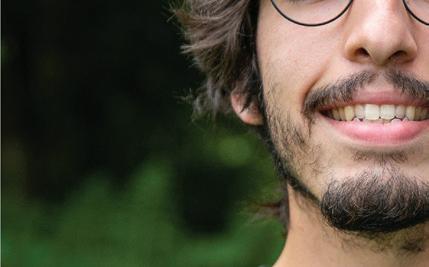
Q: What are your hobbies?
I like listening to new music, taking photos of interesting people and exploring new places. I love hiking and spending time outdoors.
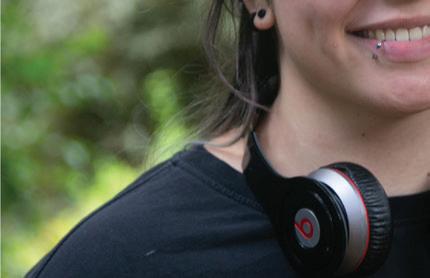
Q:What’s your favorite part about being on staff?
I love the fact that I was able to be a part of the team in person and just feel and enjoy the vibes in the room every week.
Q: What's your favorite story you’ve written? I loveeeeed doing the show and movie reviews! Those were fun because everyone has their own opinions and just knowing that those articles sparked some conversation is everything.
Q: What are your hobbies?
Honestly I have tons of hobbies! I enjoy doing my nails, painting, taking my dog on new adventures around humboldt county, Cooking some awesome meals, some just random and on the fly. I like to do things that are going to stimulate my mind and keep me creative.
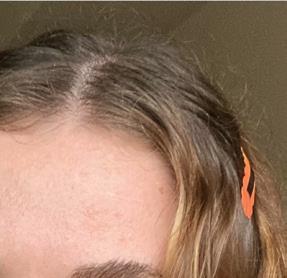
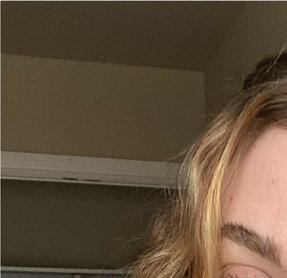
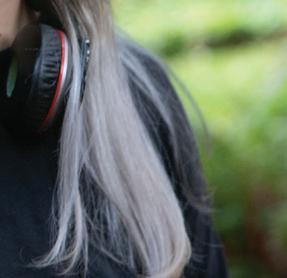 Dante Cardenas | Tech Operator Computer Science | Senior
Dante Cardenas | Tech Operator Computer Science | Senior
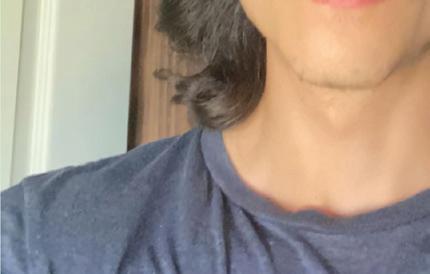
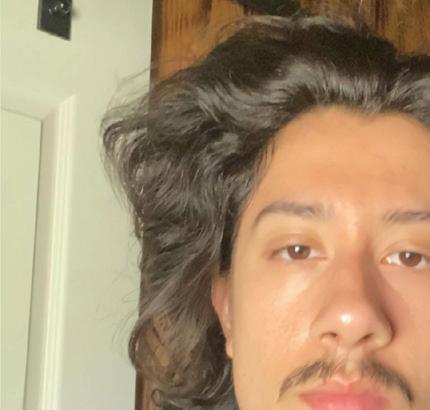
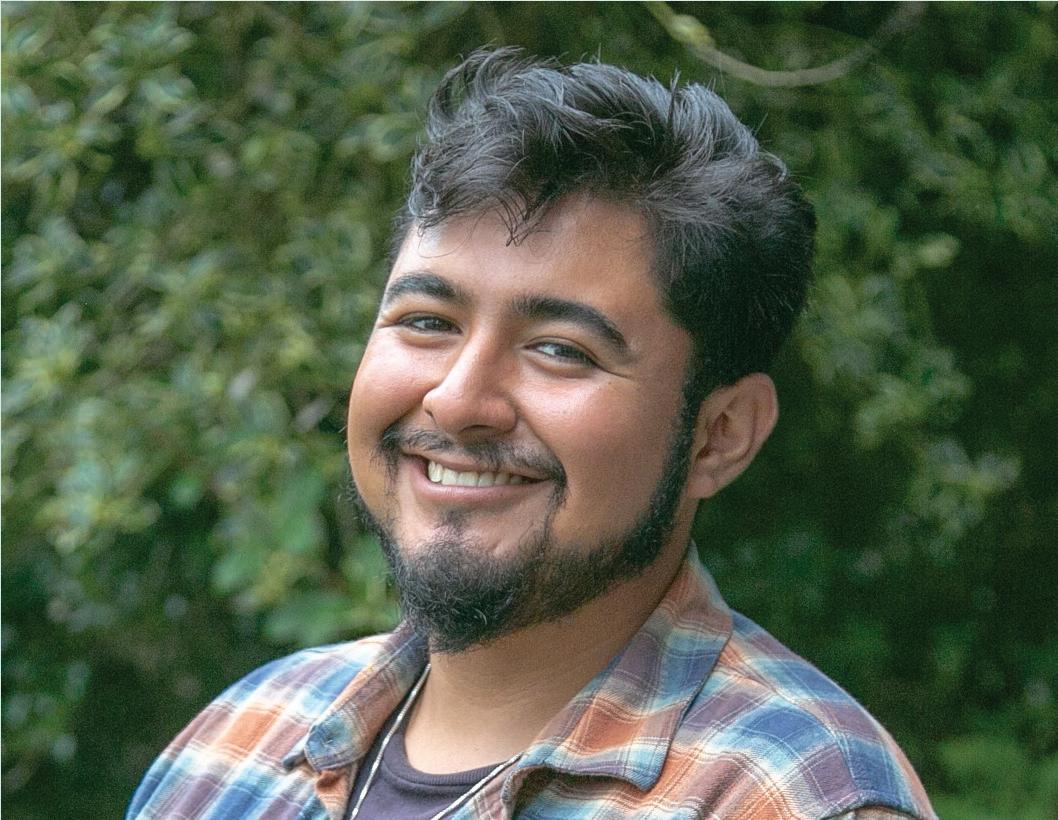
Q:What’s your favorite part about being on staff? I’ve seen the impact on the campus and local community. Either through distribution or conversation, El Leñador was always mentioned with warmth and familiarity. The reception from the community and my experience with the staff all seem to come full circle.
Q: What has El Leñ taught you? There have been countless times that I have walked by and seen 215 lit up and filled with staff late past midnight. It’s either passion or procrastination, maybe both. Either way they showed up and delivered.
Q: Favorite production snack? The little chocolates. I would like to try the cobbler.

Q: What's your favorite story you’ve written?
The United Farm Workers March, it was cool to interview passionate people in the march and hear exactly what it was like.
Q: What are your hobbies?



Thrift shopping, tarot cards, taking care of my plants and journaling.
Q:What has El Leñ taught you? How important it is to get the stories of marginalized communities out to the public. I have met so many amazing people from my stories the past few semesters and I’m honored to be the one to write about their experiences.
way possible.

ellenadornews.com | diciembre 2022| El Leñador| 23
Steffi Puerto | Public Relations Manager
Journalism & CRGS | Senior
Abraham Navarro | Photo Editor
Journalism | Senior
Danielle Hendrickson | Reporter Journalism | Senior
Celesté Sadler | Reporter English | Sophomore
Peyton Leone | Reporter & Visual Editor
Raven Linton | Reporter Public Relations | Senior
Volunteers not photographed: Elizabeth Lachman, Alondra Cardona, Jennifer Reyes, Jennifer Diaz Axomulco, Sandy Ceja, Esmeralda Macias. Our volunteers make essential contributions to keep the newspaper. Thank you to each and every one of them for their dedication, staying on call to make quick turnarounds and supporting in every
Bilingual News
El Leñador
Distributed in Fortuna, Eureka, Arcata, McKinleyville and Trinidad
Address: 1 Harpst St., Arcata, Gist Hall 227 Phone: (707) 826-3259 Website: www.ellenadornews.com
Community Resources
Paso a Paso
English: Bilingual organization that helps connect families with local and stage programs, including CalFresh and Healthy Kids Humboldt. They provide childbirth education, breastfeeding support and parenting classes. It’s FREE. Call for an appointment.
Address: 2200 Harrison Ave, Eureka Phone: (707) 441-4477
Español: Una organización con personal bilingüe que ayuda a conectar a las familias con programas locales y estatales incluyendo CalFresh y Healthy Kids Humboldt. También ofrecen educacíon sobre el parto, apoyo a la lactancia materna y clases para paders. Es GRATIS.
Dirección: 2200 Harrison Ave, Eureka Telefono: (707) 441-4477
Food for People
Offers food assistance programs including food pantries, produce markets and food programs for children
Address: 307 W. 14th St., Eureka Phone: (707) 445-3166 Website: www.foodforpeople.org
Church
Sacred Heart Church
English: Catholic mass in Spanish Address: Myrtle Ave, Eureka Phone: (707) 443-6009
Sacred Heart Church - católica Español: Misa - miércoles 7 p.m., domingo 12:15 p.m.
Dirección: 2085 Myrtle Avenue, Eureka (707) 442-6151
St. Joseph Parish
English: Catholic mass in Spanish Sunday at 12:30 p.m.
Address: 14th and N St., Fortuna
Phone: (707) 725-1148
St. Joseph Parish - católica
Español: Misa - jueves 7:15 p.m., domingo mediodía 14th and N St., Fortuna (707) 725-1148
Chabad of Humboldt - Jewish Address: 413 Bayside Ct., Arcata Phone: (707) 633-8770
Education
College of the Redwoods (CR)
English: Offers ESL courses at its Eureka, Fortuna and Del Norte sites. Complete the online application and contact Adult Education to schedule an appointment.
If you are a student with a disability, an English Language Learner, or need assistance completing the application, contact Adult Education to schedule an appointment. All Adult Education classes are free.
Phone: (707) 476-4520
Email: adult-ed@redwoods.edu
Español: Ofrece cursos de ESL en sus sitios de Eureka, Fortuna y Del Norte. Complete la solicitud en línea y comuníquese con Educacíon para Adultos para programar una cita. Si usted es un estudiante con una discapacidad, un estudiante del idioma inglés o necesita ayuda para completar la solicitud, comuníquese con Educacíon para Adultos para programar una cita. Todas las clases de educacíon para adultos son gratuitas.
Telefono: (707) 476-4520
El correo electrónico: adult-ed@redwoods.edu
English Express
Community taught English Learning Classes in various locations aught online. Catalyzes personal and social change for local immigrants through English language education and connections to community resources.
Location: Jefferson Community Center 1000 B St., Eureka on Tues. from 6-7:30 p.m.
Location: Multi-Generational Center 2280 Newburg Rd., Fortuna on Tues. and Thurs. from 12:30-2 p.m.
Location: Coast Seafoods on Wed. from 11:30-12:30 p.m. for employees only.
Phone: (707) 443-5021
No registration necessary. Free classes. Free child care. Join any time.
Bilingual K-12 Schools
Fuente Nueva Charter School 1730 Janes Rd., Arcata Phone: (707) 822-3348
Entertainment/Arts
People of Color Group
A space for people of color to gather, reflect, create and support one another. First and third Saturday’s in the month from 3-5 p.m. Corner of 11th and M St., Arcata
Latino Outdoors
Email: Humboldt@latinooutdoors.org
El correo electrónico: Humboldt@ latinooutdoors.org
North Coast Repertory Theatre
300 5th St., Eureka, CA 95501
Ethnic Markets
Lao Oriental Market 2908 E St., Eureka Phone: (707) 445-1513
Little Japan 2848 F St., Eureka Phone: (707) 798-6003
Vang Chang Market 110 W Wabash Ave., Eureka Phone: (707) 445-8397
Oriental Food & Spice 306 W Harris St., Eureka Phone: (707) 445-3398
Asia’s Best
2085 Myrtle Avenue #8, Eureka (707) 497-6386
La Pasadita Market 420 N St., Eureka (707) 268-3902
El Pueblo Market
312 W. Washington St., Eureka Phone: (707) 444-0952
La Chaparrita Market
520 Summer St., Fortuna Phone: (707) 617-2570
El Buen Gusto
802 Broadway St., Eureka
Open: Mon-Fri from 10 a.m.-9 p.m. Phone: (707) 798-6290 & 1640 Main St., Fortuna Open: Mon-Fri from 9 a.m.-9 p.m. Phone: (707) 725-8880
Legal Services
The Superior Court of California| County of Humboldt “Self Help Center”
Legal rights information regardless of income
421 I St., Eureka, Phone:(707) 445-7256
Legal Services of Northern California
Serving clients with health related legal issues in acquiring and keeping health-care services
Address:123 3rd St., Eureka Phone:(707) 445-0866
California Indian Legal Services
Address:324 F St., Eureka Phone:(707) 443-3559
Scholars Without Borders
Club at HSU to support AB540 students located on the 2nd floor of the MCC Phone:(707) 826-3368
HSU Student Legal Lounge
Center for peer mentoring and legal resources for academic, activism, discrimination, housing, Title IX and DACA Website: studentlegallounge.humboldt.edu
Social Services
True North Organizing Network
Supporting individuals from diverse backgrounds and work together for influential change
Address: 517 3rd St., Suite 16, Eureka Phone:(707) 572-5530
Seventh Generation Fund
Devoted to Indigenous peoples selfdetermination and the sovereignty of Native Nations
Address: 2355 Central Ave., Suite C, McKinleyville Phone:(707) 825-7640
Centro Del Pueblo
A safe space for the raza/indígena community to prosper culturally, politically, and practically on the North Coast Email: cdphumboldt@gmail.com
24 | El Leñador |diciembre 2022| ellenadornews.com Directory
Resources for the Latinx Community | Recursos para la comunidad Latinx






































































































 by Peyton Leone
by Peyton Leone

























































 by Celeste Sadler
by Celeste Sadler


























 by Peyton Leon
by Peyton Leon











































































































































































 by Karina Ramos Villalobos
by Karina Ramos Villalobos




















 by Abraham Navarro
por Abraham Navarro traducido por Desiree Osornio
by Abraham Navarro
por Abraham Navarro traducido por Desiree Osornio






















 Ricardo Lara Nava
Ricardo Lara Nava



















































 Dante Cardenas | Tech Operator Computer Science | Senior
Dante Cardenas | Tech Operator Computer Science | Senior







